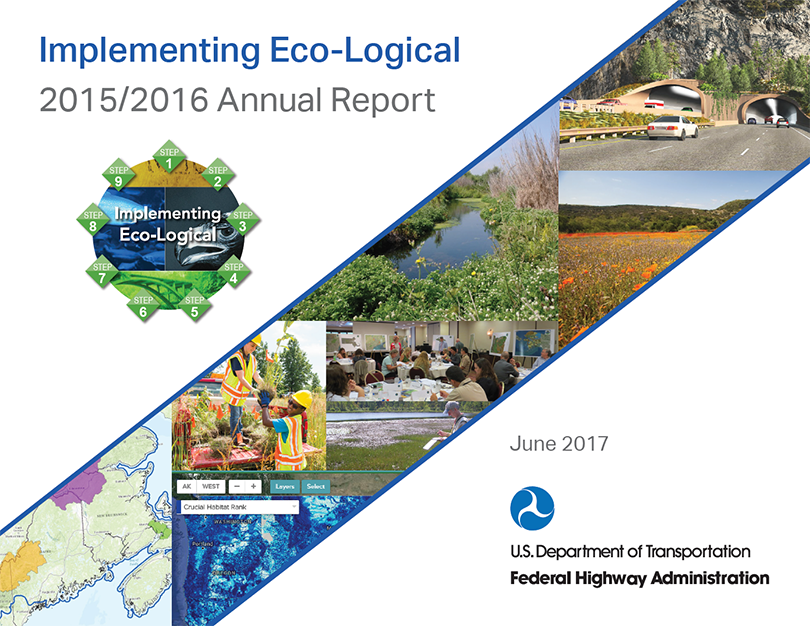
Cover art sources: Images from top:
Tunnel rendering, courtesy of the Colorado Department of Transportation
Field of orange flowers; image source: Creative Commons (Public Domain)
Wetlands; image source: Creative Commons (Public Domain)
Past Eco-Logical Peer Exchange at American Association of State Highway and Transportation Officials (AASHTO) Standing Committee on Environment Annual Conference (held July 2015), courtesy of AASHTO and CH2M
Volunteers in the field, courtesy of the Michigan Department of Transportation
Staff conducting field visit, courtesy of the New Hampshire Department of Transportation/New Hampshire Natural Heritage Bureau
Crucial Habitat Assessment Tool map showing crucial habitat rank; image source: Western Association of Fish and Wildlife Agencies
Priority Linkages in the Northern Appalachians map; image source: The Nature Conservancy on behalf of the Staying Connected Initiative Partnership, as submitted to the New Hampshire Fish and Game Department and U.S. Fish and Wildlife Service
Printer-friendly PDF of this report (14.1 MB)
Notice
This document is distributed by the U.S. Department of Transportation, in the interest of information exchange. The United States Government assumes no liability for its contents or use thereof. If trademarks or manufacturers’ names or products are mentioned, it is because they are considered essential to the objective of the publication and should not be considered as an endorsement. The United States Government does not endorse products or manufacturers.
Quality Assurance Statement
The Federal Highway Administration (FHWA) provides high-quality information to serve Government, industry, and the public in a manner that promotes public understanding. Standards and policies are used to ensure and maximize the quality, objectivity, utility, and integrity of its information. FHWA periodically reviews quality issues and adjusts its programs and processes to ensure continuous quality improvement.
Acronyms and Abbreviations
| AASHTO |
American Association of State Highway and Transportation Officials |
| BLM |
Bureau of Land Management |
| CAP |
Conservation Action Plan |
| DOT |
Department of Transportation |
| EO |
Executive Order |
| EPA |
U.S. Environmental Protection Agency |
| ESA |
Endangered Species Act |
| FAST |
Fixing America’s Surface Transportation |
| FHWA |
Federal Highway Administration |
| GIS |
Geographic Information Systems |
| IAP |
Implementation Assistance Program |
| IEF |
Integrated Ecological Framework |
| ILF |
In-Lieu Fee |
| MPO |
Metropolitan Planning Organization |
| NEPA |
National Environmental Policy Act |
| NGO |
Non-Governmental Organization |
| NOAA |
National Oceanic and Atmospheric Administration |
| NPS |
National Park Service |
| PEL |
Planning and Environment Linkages |
| REF |
Regional Ecosystem Framework |
| SHRP2 |
Second Strategic Highway Research Program |
| TRB |
Transportation Research Board |
| USACE |
U.S. Army Corps of Engineers |
| U.S. DOT |
U.S. Department of Transportation |
| USFS |
U.S. Forest Service |
| USFWS |
U.S. Fish and Wildlife Service |
| REPORT DOCUMENTATION PAGE |
Form Approved
OMB No. 0704-0188 |
| Public reporting burden for this collection of information is estimated to average 1 hour per response, including the time for reviewing instructions, searching existing data sources, gathering and maintaining the data needed, and completing and reviewing the collection of information. Send comments regarding this burden estimate or any other aspect of this collection of information, including suggestions for reducing this burden, to Washington Headquarters Services, Directorate for Information Operations and Reports, 1215 Jefferson Davis Highway, Suite 1204, Arlington, VA 22202-4302, and to the Office of Management and Budget, Paperwork Reduction Project (0704-0188), Washington, DC 20503. |
| 1. AGENCY USE ONLY (Leave blank) |
2. REPORT DATE
June 2017 |
3. REPORT TYPE AND DATES COVERED
Final Report (August 2015 - June 2017) |
4. TITLE AND SUBTITLE
Federal Highway Administration 2015/2016 Implementing Eco-Logical Program Annual Report |
5. FUNDING NUMBERS
HW9YA1/PLN24
HW9YA1/QLN24 |
6. AUTHOR(S)
Rachel Strauss McBrien, Anjuliee Mittelman, Madison Burke, Christopher Timmel, Jordan Wainer, Daniel Flynn, Julianne Schwarzer |
7. PERFORMING ORGANIZATION NAME(S) AND ADDRESS(ES)
John A. Volpe National Transportation Systems Center
U.S. Department of Transportation
55 Broadway
Cambridge, MA 02142 |
8. PERFORMING ORGANIZATION REPORT NUMBER
DOT-VNTSC-FHWA-17-21 |
9. SPONSORING/MONITORING AGENCY NAME(S) AND ADDRESS(ES)
Federal Highway Administration
U.S. Department of Transportation
1200 New Jersey Avenue, SE
Washington, DC 20590 |
10. SPONSORING/MONITORING
AGENCY REPORT NUMBER
FHWA-HEP-17-092 |
| 11. SUPPLEMENTARY NOTES |
12a. DISTRIBUTION/AVAILABILITY STATEMENT
This document is available to the public on the FHWA website at:
https://www.environment.fhwa.dot.gov/Env_initiatives/eco-logical/AnnualReports/annualreport_2015-16.aspx. |
12b. DISTRIBUTION CODE |
13. ABSTRACT (Maximum 200 words)
The Eco-Logical approach offers an ecosystem-based framework for integrated infrastructure and natural resource planning, project development, and delivery. The 2015/2016 Implementing Eco-Logical Annual Report provides updates on the Federal Highway Administration’s Eco-Logical Program, in particular the Implementing Eco-Logical initiative funded through the Second Strategic Highway Research Program in coordination with the American Association of State Highway and Transportation Officials and the Transportation Research Board. The report discusses program accomplishments of Implementing Eco-Logical as well as from Implementing Eco-Logical Implementation Assistance Program recipients. |
14. SUBJECT TERMS
Eco-Logical; Implementing Eco-Logical; Second Strategic Highway Research Program; Regional Ecosystem Framework; Integrated Ecological Framework; environment; transportation; ecosystems; ecosystem-based approach |
15. NUMBER OF PAGES
74 |
| 16. PRICE CODE |
17. SECURITY CLASSIFICATION OF REPORT
Unclassified |
18. SECURITY CLASSIFICATION OF THIS PAGE
Unclassified |
19. SECURITY CLASSIFICATION OF ABSTRACT
Unclassified |
20. LIMITATION OF ABSTRACT
Unlimited |
Table of Contents
Thank You, Practitioners
Through the Implementing Eco-Logical Program, the Federal Highway Administration (FHWA), in partnership with the American Association of State Highway and Transportation Officials (AASHTO) and the Transportation Research Board (TRB), has advanced the state of the practice and shared noteworthy Eco-Logical practices.
Thank you to all who have participated and offered their time, knowledge, and insights along the way, including those who attended events sponsored by the program, such as the events featured below.
Eco-Logical Peer Exchange: Programmatic Mitigation for State Departments of Transportation
(March 2015)
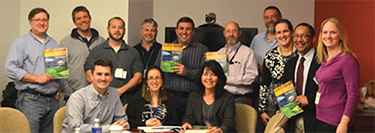
Eco-Logical Workshop: Maine Department of Transportation and Resource Agency Partners
(April 2015)
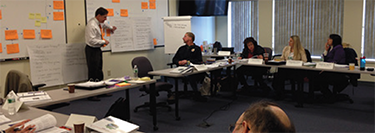
Eco-Logical Peer Exchange: Programmatic Mitigation for Metropolitan Planning Organizations
(June 2015)
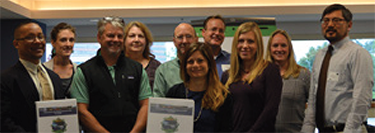
Eco-Logical Peer Exchange at AASHTO Standing Committee on Environment Annual Conference
(July 2015)
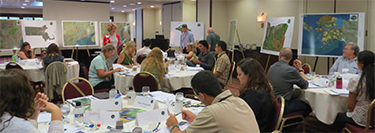
Eco-Logical Peer Exchange at the TRB Environmental Analysis in Transportation Mid-Year Workshop
(September 2015)
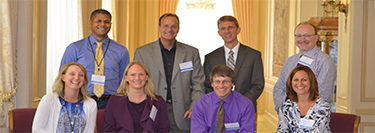
Eco-Logical Peer Exchange: Implementing Eco-Logical Implementation Assistance Program
(October 2015)
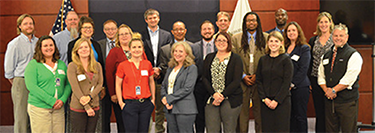
Eco-Logical Workshop: South Carolina Department of Transportation
(April 2016)
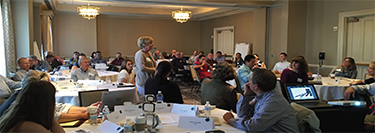
Eco-Logical Workshop: Colorado Department of Transportation
(April 2016)
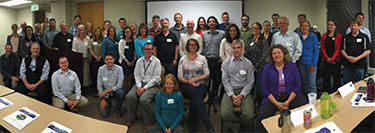
Eco-Logical Peer Exchange: Programmatic Mitigation
(June 2016)
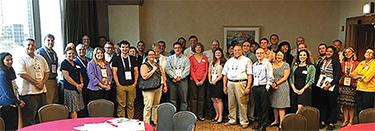
All images courtesy of CH2M
To our Eco-Logical Practitioners and Friends:
Authorized in 2005, SHRP2 is a large-scale, cooperative research program funded by Congress and administered by FHWA, AASHTO, and TRB to advance innovative methods for the Nation’s highway system.
The program’s initiatives, known as “SHRP2 Solutions,” are categorized under four focus areas: Safety, Renewal, Capacity, and Reliability.
The SHRP2 Implementing Eco-Logical Program, also known as C06, is one SHRP2 Solution under the Capacity focus area.
On behalf of the FHWA team, we would like to say thank you to AASHTO for partnering with us to promote Eco-Logical through the Second Strategic Highway Research Program (SHRP2).
The SHRP2 Implementing Eco-Logical Program goes a step further in promoting Eco-Logical, a landscape-scale approach for planning and developing infrastructure projects. Through the FHWA-AASHTO partnership, we have been able to develop and deliver a range of activities described in this report.
The team’s efforts have helped spread awareness and increased the use of Eco-Logical. Through the program, FHWA has seen and continues to see advancements in expediting project delivery processes and producing better environmental outcomes.
Eco-Logical practitioners have also continued to champion the approach. We dedicate this annual report to these practitioners. The report discusses the state of the practice of Eco-Logical, recognizes practitioner accomplishments and completion of the SHRP2 Implementing Eco-Logical Program, and offers a framework for the future.
We would like to thank everyone for making the SHRP2 Implementing Eco-Logical Program successful and for your continued support of the Eco-Logical vision. While the SHRP2 phase is coming to a close, FHWA will continue its support of Eco-Logical moving forward.
Thank you for your contributions. We could not do it without you.
Sincerely,
David T. Williams
Environmental Protection Specialist
FHWA Office of Project Development and Environmental Review
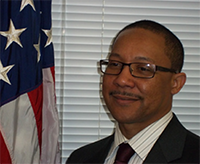
Mike Ruth
Ecologist/Geologist
FHWA Office of Project Development and Environmental Review

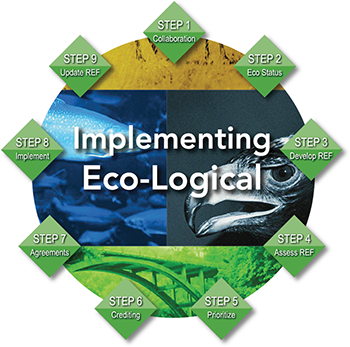
Step 3 in the nine-step IEF is key, supporting the development of a Regional Ecosystem Framework, or REF. An agency can use the REF to integrate infrastructure and natural resource data with transportation and natural resource plans. Establishing an REF allows the agency and its partners to work from the same, integrated set of information.
For more information on the nine steps, please visit: www.environment.fhwa.dot.gov/Env_initiatives/eco-logical.aspx
Eco-Logical Approach
What is Eco-Logical?
A landscape-scale approach for planning and developing infrastructure projects that:
- Brings together infrastructure, resource, and regulatory agencies, along with other partners, to form strong partnerships;
- Asks agencies to incorporate natural resource and infrastructure data for use in infrastructure, conservation, and mitigation planning and decisionmaking; and
- Allows agencies to establish joint priorities, and avoid critical environmental resources while meeting infrastructure objectives.
The Integrated Ecological Framework (IEF)
The IEF provides a systematic, nine-step process for natural resource identification, avoidance, minimization, and mitigation. The steps organize how agencies can partner and integrate plans to identify environmental priority areas and ecological considerations in project planning and delivery. Agencies can apply the steps in order or independently of each other.
Who is Implementing Eco-Logical?
There are more than 35 transportation agencies in the United States using the Eco-Logical approach today, including:
Is your agency engaged in Eco-Logical
but not listed on the map?
Let us know.
- 13 State departments of transportation (State DOTs) and metropolitan planning organizations (MPOs) funded through the SHRP2 Implementing Eco-Logical Implementation Assistance Program (IAP); and
- 22 other transportation agencies that are using Eco-Logical to guide transportation plans or projects.
Though agencies may use different terms instead of “Eco-Logical” to describe their approach, the underlying principles are often the same.
Related terms include:
- Landscape-scale
- Ecosystem-scale
- Ecosystem approach
- Watershed approach
Eco-Logical State of the Practice
Over 10 years since its inception, Eco-Logical is becoming business-as-usual for many agencies across the country. The SHRP2 Implementing Eco-Logical Program has played an important part in this growing momentum, helping move Eco-Logical from concept to implementation. The Program has found success in accomplishing goals related to agency adoption, expedited environmental reviews and project delivery, and policy support within transportation and resource agencies.
The AASHTO Self-Assessments
AASHTO circulated two self-assessment questionnaires about the Eco-Logical approach in April 2014 and October 2016 to provide a baseline for the state of the practice (2014) and track trends (2016).
Many of the findings shown at right came from the questionnaire results.
For more on the AASHTO questionnaires, view this section and this section.
Establishing Program Goals
One of the early goals of the SHRP2 Implementing Eco-Logical Program was to achieve widespread use of integrated highway and conservation planning and development strategies within 10 years.
FHWA and AASHTO, in partnership with a panel of experts and stakeholders, developed an Implementation Plan for the Program, identifying six implementation strategies to help achieve this goal.
To help evaluate the Program’s results, FHWA and AASHTO considered the impacts of the SHRP2 Implementing Eco-Logical Program on the “state of the practice” since its establishment in 2013.
Defining State of the Practice
The Implementation Plan defined “state of the practice” by the change in the number of practitioners, level of understanding and application, and the number and types of resources available. In addition, the state of the practice is influenced by and influences changes (or trends) in national policy and the support of resource and regulatory agencies.
The SHRP2 Implementing Eco-Logical Implementation Plan also “anticipated that full adoption of Implementing Eco-Logical (i.e., full integration of the IEF and supportive systems into routine business practices) at any agency may take 5 to 10 years.”
Better understanding the state of the practice helped FHWA and AASHTO develop and direct program activities.
Key Findings
After four years of SHRP2 implementation, FHWA and AASHTO found the following regarding the state of the practice:
- The number of practitioner agencies has increased as a result of SHRP2.
In 2014, 27 questionnaire respondents indicated that their agencies were implementing any step of the IEF. By 2016, 69 respondents noted that their agencies were applying at least one of the IEF steps.
- The level of familiarity with Eco-Logical, particularly among State DOTs, has grown.
In 2014, 71 percent of State DOT respondents indicated that they were somewhat or very familiar with Eco-Logical. By 2016, 81 percent of State DOT respondents noted that they were somewhat or very familiar.
- MPOs are increasingly using Eco-Logical to integrate ecosystem considerations into transportation planning.
All four MPO recipients that received Lead Adopter funding (up to $250,000) under the SHRP2 Implementing Eco-Logical IAP tied their activities to larger decisionmaking processes in their regions and are starting to use it more closely in project selection and delivery.
- The number and quality of technical assistance resources are increasing.
FHWA and AASHTO have delivered six peer exchanges, four workshops, two executive trainings, three annual reports, and four Community of Practice webinars for practitioners.
- New legislation and national policy directives are encouraging practices that benefit Eco-Logical.
From 2012 until present, at least seven new regulations, policies, and executive actions, including the Fixing America’s Surface Transportation Act, have shown a major shift toward adopting a collaborative, landscape-scale approach for conservation, mitigation, and infrastructure development (see pages 6-7).
- The Signatory Agencies reaffirmed their commitment.
In 2016, the eight Federal agencies (the “Signatory Agencies”) that first started Eco-Logical in 2006 celebrated its 10th anniversary and committed to continuing to promote an interagency dialogue on the approach.
- The value practitioners obtain from implementing the Eco-Logical approach is increasing.
Recipients in the SHRP2 Implementing Eco-Logical IAP reported improved partnerships, more comprehensive stakeholder engagement, and stronger leadership support resulting from Eco-Logical projects and activities.
- The strength of partnerships remains between State DOTs and MPOs, but also includes new partners.
IAP recipients found that, while partnerships between State DOTs and MPOs continue to be strong, Eco-Logical helped foster interest from others, including resource and regulatory agencies and nongovernmental organizations (NGOs).
- There is still a need for outreach, particularly to agencies not yet using Eco-Logical.
IAP recipients have indicated that having easily accessible materials and resources available online can help those new to Eco-Logical as they explore using it in their project planning, decisionmaking, and delivery processes.
A Timeline of Eco-Logical From 2006 - Present
Celebrating 10 Years of Eco-Logical
2016 marks the 10th anniversary of the signing of Eco-Logical: An Ecosystem Approach to Developing Infrastructure Projects. Since 2006, Eco-Logical’s principles have continued to grow in practice and are reflected in many Federal initiatives.
In 2008, research for the SHRP2 Implementing Eco-Logical Program first began. Led today by FHWA and AASHTO, the program offers a variety of resources for agencies looking to build on or learn about the Eco-Logical approach.
| 2006 |
FHWA, with support from the Federal Signatory Agencies and four State DOTs, publishes Eco-Logical |
| 2007 |
FHWA Launches Eco-Logical Grant Program
U.S. Forest Service (USFS) releases its Open Space Conservation Strategy |
| 2008 |
U.S. Army Corps of Engineers (USACE) and the U.S. Environmental Protection Agency (EPA) issue the 2008 Compensatory |
| 2010 |
FHWA launches the Eco-Logical Webinar Series
Signatory Agencies begin holding bi-annual meetings
Maryland State Highway Administration launches the Watershed Resources Registry
National Oceanic and Atmospheric Administration (NOAA) establishes its Ecosystem-Based Fisheries Management Policy
Bureau of Land Management (BLM) starts Rapid Ecoregional Assessments
|
| 2011 |
USFS issues Watershed Conditional Framework
USFS publishes technical guide to evaluate watershed conditions
EPA kicks off Healthy Watersheds Initiative
|
| 2012 |
White House releases Executive Order 13604: Improving Performance of Federal Permitting and Review of Infrastructure Projects
USFS issues Land Management Planning Rule
|
| 2013 |
White House announces Presidential Memorandum: Modernizing Federal Infrastructure Review
Department of the Interior releases Secretarial Order 3330: Improving Mitigation Policies and Practices
|
| 2014 |
AASHTO conducts SHRP2 Eco-Logical self-assessment among State DOTs and MPOs
FHWA and AASHTO identify and solicit Eco-Logical Champions
EPA, U.S. Department of Transportation (U.S. DOT), and five other Federal agencies form the Green Infrastructure Collaborative
|
| 2015 |
FHWA and eight Federal agency partners release updated Red Book
White House issues Presidential Memorandum: Mitigating Impacts on Natural Resources
USACE releases 2008 Mitigation Rule Retrospective
|
| 2016 |
Celebration of Eco-Logical 10-Year Anniversary |
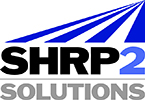
SHRP2 and Eco-Logical
SHRP2 Overview
SHRP2 is a comprehensive effort to advance innovative methods for planning, renewing, operating, and ensuring safety on the Nation’s highway system. SHRP2 is a multiagency partnership among FHWA, AASHTO, and TRB.
The individual initiatives under the four SHRP2 focus areas are called “Solutions.”
Implementing Eco-Logical, also known as the SHRP2 Solution C06, complements FHWA’s existing Eco-Logical Program. Both programs encourage the Eco-Logical approach through various resources and technical assistance.
SHRP2 and its Focus Areas
SHRP2 has four focus areas—Safety, Renewal, Capacity, and Reliability.
Implementing Eco-Logical falls under the Capacity focus area.
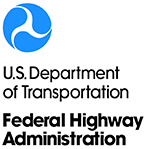

Safety
Fostering safer driving through analysis of driver, roadway, and vehicle factors in crashes, near crashes, and ordinary driving.

Renewal
Rapid maintenance and repair of the deteriorating infrastructure using already-available resources, innovations, and technologies.

Capacity
Planning and designing a highway system that offers minimum disruption and meets the environmental and economic needs of the community.

Reliability
Reducing congestion and creating more predictable travel times through better operations.

A Timeline of SHRP2
TRB Implementing
Eco-Logical Research
Initial support of the SHRP2 Implementing Eco-Logical Program began with research led by TRB in 2008. The TRB research focused on the application of ecological principles in the planning and delivery of transportation projects. This research led to the development of the nine-step IEF, which is a major component of Eco-Logical.
| 2008 |
SHRP2 research on Implementing Eco-Logical, led by TRB, begins |
| 2011 |
First SHRP2 Implementing Eco-Logical research project complete |
| 2012 |
FHWA and AASHTO develop SHRP2 Implementing Eco-Logical Implementation Plan |
| 2013 |
FHWA and AASHTO launch the SHRP2 Implementing Eco-Logical Program |
| 2015 |
FHWA and AASHTO launch the SHRP2 Implementing Eco-Logical Starter Kit, On-Call Technical Assistance, and Workshops and Peer Exchanges |
| 2016 |
FHWA begins SHRP2 Implementing Eco-Logical IAP project closeout
FHWA and AASHTO begin institutionalizing SHRP2 Implementing Eco-Logical activities
|
Implementation Strategies
SHRP2 focuses on moving from concept to production. Implementing Eco-Logical provides transportation and environmental professionals a method to apply ecosystem-scale principles to expedite project delivery and achieve better environmental outcomes.
The SHRP2 Implementing Eco-Logical Implementation Plan utilizes six strategies and a $3.6 million budget to engage transportation agencies and support their efforts to place these principles into practice.
FHWA and AASHTO have partnered to oversee the execution of the plan, which complements the broader FHWA Eco-Logical Program.
The section below shares updates on investment amounts, status, and accomplishments for the six strategies.
 |
Educate agency leadership
- Identify and equip champions
- Offer executive training
- Develop Practitioner's Handbook
- Conduct Eco-Logical self-assessment
|
 |
Develop a business case
- Make case studies widely available
- Disseminate lifecycle costs and benefits
- Conduct targeted outreach to stakeholders
|
 |
Develop incentives + support
- Provide incentive grants and assistance for implementation
- Offer awards and recognition
|
 |
Develop new tools + technologies
- Facilitate data management and access
- Develop an information clearinghouse
- Develop structures to foster collaboration
|
 |
Provide technical assistance
- Develop technical assistance teams
- Sponsor peer exchanges and forums
- Develop a “starter kit” for Implementing Eco-Logical
|
 |
Develop communications + outreach materials
- Develop and implement a strategic marketing and communications plan
- Develop and distribute an informational video
|
Icon Credits (all from the Noun Project; clockwise, from top left): Leadership: Samuel Q. Green; Business Case: N/A; Tools: Julie Reyes Villalta; Communications: romzicon; Technical Assistance: Gregory Radek; Incentives: Wilson Joseph
| Implementation Strategies |
Investment Amount
% Budgeted |
Status
% Complete |
Accomplishments |

Educate agency leadership
|
3% |
95% |
- 56 Champions nationwide
- 2 Executive Training Sessions
- Practitioner’s Handbook produced
- 2014 & 2016 assessments conducted
|

Develop incentives + support
|
85% |
98% |
- Approx. $1.9 million provided to 13 State DOTs and MPOs
- 14 projects completed
- Letters of recognition provided
|

Provide technical assistance
|
7% |
90% |
- 10 peer exchanges and workshops
- Web-based, on-call technical assistance request form launched
- Starter Kit website released
|

Develop a business case
|
3% |
85% |
- 4 case studies highlighting the 9 IEF steps produced
- Business case demonstrating cost and time savings of Eco-Logical developed
|

Develop new tools + technologies
|
1% |
75% |
- 4 Community of Practice webinars held
- Integration of SHRP2 PlanWorks with Implementing Eco-Logical commenced
|

Develop communications + outreach materials
|
1% |
100% |
- Strategic marketing and communications plan prepared and implemented
- Informational video celebrating 10-year anniversary of Eco-Logical produced
|
SHRP2 Accomplishments
Eco-Logical Champions
by Agency Type
(56 Champions in total)
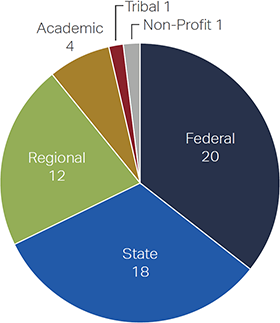
This report showcases accomplishments of the FHWA-AASHTO SHRP2 Implementing Eco-Logical Program and activities relating to the FHWA Eco-Logical Program for the period August 2015 through June 2017. Accomplishments are organized by the implementation strategy under which they fall. The first strategy, “Educate Agency Leadership,” is shown below.
Eco-Logical Champions
Eco-Logical Champions are practitioners, partners, and researchers who are willing to “champion” the Eco-Logical approach within their own agencies and to partner with agencies and others in their professional networks.
Fifty-six individuals from Federal, State, Tribal, regional, and non-profit agencies and organizations as well as academia currently serve as Champions.
The Champions work to help increase understanding of Eco-Logical among agencies and motivate greater participation in the Implementing Eco-Logical Program. They also provide input to FHWA and AASHTO on the implementation of Eco-Logical from the field.
Executive Training
AASHTO conducted two executive trainings in 2013 and 2014 to provide information on the Eco-Logical approach to State DOT leadership. AASHTO held the trainings in conjunction with its annual meetings.
The sessions focused on the “next generation” of environmental streamlining and actions State DOTs are taking to expedite project delivery. Several State DOT leaders shared their agencies’ experiences and perspectives in using Eco-Logical.
Presenters at the executive sessions included representatives from State DOTs in California, Maryland, Michigan, and Oregon.

Educate Agency Leadership
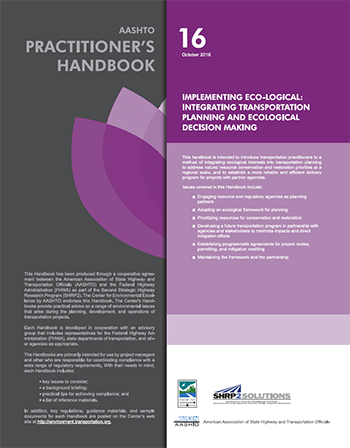
Cover of the AASHTO Implementing Eco-Logical Practitioner’s Handbook. Image courtesy of AASHTO.
Practitioner’s Handbook
Published by AASHTO in October 2016, the Implementing Eco-Logical Practitioner’s Handbook introduces transportation practitioners to the Eco-Logical approach, covering topics such as:
- Engaging resource and regulatory agencies as planning partners
- Adopting an ecological framework for planning
- Prioritizing resources for conservation and restoration
- Developing a future transportation program in partnership with agencies and stakeholders to minimize impacts and direct mitigation efforts
- Establishing programmatic agreements for project review, permitting, and mitigation crediting
- Developing and maintaining the REF and partnerships
Eco-Logical Self-Assessment
In 2014 and 2016, AASHTO conducted Eco-Logical self-assessment questionnaires to learn from practitioners about how they were using the Eco-Logical approach.
The information from the questionnaires helped AASHTO and FHWA obtain a better understanding of the state of the practice of the Eco-Logical approach, as discussed earlier.
The October 2016 questionnaire received more than double the responses obtained in 2014. In 2014, 60 respondents participated. In 2016, almost 150 respondents from Federal agencies, State DOTs and MPOs, State resource/wildlife agencies, local governments, universities, and consulting firms shared information about their familiarity with Eco-Logical and how they are using the approach.

Develop Incentives + Support
In 2013, FHWA distributed funds for 14 Implementation Assistance Program (IAP) projects, led by 13 State DOTs and MPOs to advance implementation of Eco-Logical in their agencies.
The IAP provided two types of funding assistance to help State DOTs and MPOs apply and integrate Eco-Logical principles in their activities:
- Lead Adopter assistance (up to $250,000) supported agencies that have completed early steps of the Eco-Logical approach, including agencies with existing collaborative partnerships that have developed or used REFs.
- User Incentive assistance (up to $25,000) encouraged agencies that have interest, though not necessarily prior experience, in adopting Eco-Logical into their organizations.
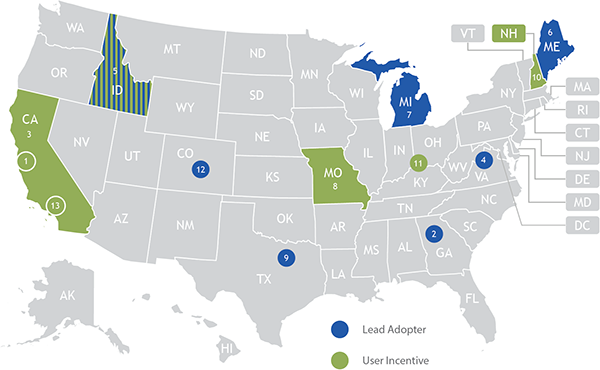
Locations of IAP recipients. Shaded States show State DOT projects and circles indicate MPO projects.
States with striped shading received both Lead Adopter and User Incentive funds.
- Association of Monterey Bay Area Governments
- Atlanta Regional Commission
- California Department of Transportation
- Charlottesville-Albemarle Metropolitan Planning Organization
- Idaho Department of Transportation
- Maine Department of Transportation
- Michigan Department of Transportation
- Missouri Department of Transportation
- North Central Texas Council of Governments
- New Hampshire Department of Transportation
- Ohio-Kentucky-Indiana Regional Council of Governments
- Pikes Peak Area Council of Governments
- Southern California Association of Governments
Status of IAP Performance Measures as of July 2015
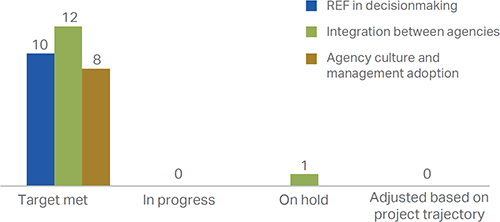
*In the December 2015 annual report, 7 performance measures had met their targets, 22 measures were in progress, 1 measure was on hold, and 1 measure was adjusted. As of June 2017, all measures have been met, excluding one that is on hold.
IAP Performance Measures
In the initial kick-off stages of their projects, IAP recipients identified performance measures they wished to use to track progress.
Recipients were asked to select performance measures in three focus areas. Lead Adopter recipients selected one measure in each of the focus areas. User Incentive recipients identified a minimum of one measure.
The three focus areas were:
- Use of the REF and data tools in the decisionmaking process within an organization (“REF in decisionmaking”)
- Integration of planning and decisionmaking between agencies (“Integration between agencies”)
- Incorporation of the Eco-Logical approach into the management and culture of an organization (“Agency culture
and management adoption”)
Agencies implementing Eco-Logical have consistently reported the need for measurable benefits of the approach, in part to make a business case for Eco-Logical among their leadership and with partners.
FHWA initiated the performance measures approach for IAP recipients to better track performance and to learn more about the recipients who are using Eco-Logical and the results they found.
As the IAP comes to a close, IAP recipients have met nearly all of the originally set performance measures.
Moving forward, the performance measure tracking activities of the IAP recipients stand to provide future benefits to new Eco-Logical users. These activities can help communicate measurable benefits of applying Eco-Logical and how agencies might adapt the approach for their own uses.

Develop Incentives + Support
The Eco-Logical approach allows agencies to apply the IEF nine steps in order or independently of each other. Many agencies use the steps that best fit their needs, recognizing that not all nine steps may be needed to apply an Eco-Logical approach effectively. Below are the 13 Implementing Eco-Logical IAP recipients and the steps they applied in their IAP projects.
IAP Recipients and Their Use of the IEF Steps
| |
Step 1
Collaboration |
Step 2
Eco Status |
Step 3
Develop REF |
Step 4
Assess REF |
Step 5
Prioritize |
Step 6
Crediting |
Step 7
Agreements |
Step 8
Implement |
Step 9
Update REF |
| Association of Monterey Bay Area Governments |
★ |
★ |
★ |
|
|
|
|
|
|
| Atlanta Regional Commission |
★ |
★ |
★ |
★ |
|
|
|
|
|
| California Department of Transportation |
★ |
★ |
|
|
|
|
|
|
|
| Charlottesville-Albemarle Metropolitan Planning Organization |
★ |
★ |
★ |
★ |
|
|
|
|
★ |
| Idaho Transportation Department |
★ |
★ |
★ |
|
|
|
|
|
|
| Maine Department of Transportation |
★ |
★ |
★ |
★ |
★ |
★ |
★ |
★ |
|
| Michigan Department of Transportation |
★ |
★ |
★ |
★ |
|
|
|
|
|
| Missouri Department of Transportation |
★ |
★ |
|
|
|
|
|
|
|
| New Hampshire Department of Transportation |
★ |
★ |
|
|
|
|
|
|
|
| North Central Texas Council of Governments |
★ |
★ |
★ |
★ |
|
|
|
|
|
| Ohio-Kentucky-Indiana Regional Council of Governments |
★ |
★ |
★ |
|
|
|
|
|
|
| Pikes Peak Area Council of Governments |
★ |
★ |
★ |
★ |
|
|
|
|
★ |
| Southern California Association of Governments |
★ |
★ |
★ |
★ |
|
|
|
|
|
Over the past year, IAP recipients have found success in completing and leveraging their projects for future activities, such as those highlighted below. For additional information on the IAP projects, see the IAP project summaries provided starting on page 35 of this report.
IAP Recipient Accomplishments
Maine Department of Transportation (MaineDOT)
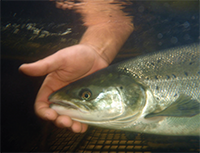
An adult Atlantic salmon. Image source: U.S. Fish and Wildlife Service (USFWS).
- Key Accomplishments:
Finalized Programmatic Biological Assessment and Programmatic Biological Opinion; developed in-lieu fee (ILF) mitigation prospectus
- IEF Steps Completed:
Steps 1-8
- Future Activities:
Finalizing ILF mitigation instrument
- Lead Adopter Project Overview:
MaineDOT led a multi-pronged effort, focused on reducing the impacts of transportation projects on Atlantic salmon and decreasing the amount of time needed for environmental reviews for State transportation projects classified as Categorical Exclusions under the National Environmental Policy Act.
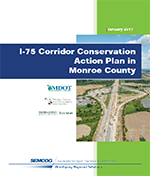
I-75 Corridor Conservation Action Plan in Monroe County. Image courtesy of MDOT.
Michigan Department of Transportation (MDOT)
- Key Accomplishments:
Developed an REF and Conservation Action Plan (CAP); established data-sharing agreement with the Michigan Department of Natural Resources
- IEF Steps Completed:
Steps 1-5
- Future Activities:
Continuing wildlife crossing activities and plant mitigation project
- Lead Adopter Project Overview:
MDOT created an REF and CAP for the Southeast Michigan/Lake Erie coastal region to identify priority locations for mitigation and conservation, improve environmental outcomes, and increase regulatory certainty for projects along the Interstate 75 (I-75) corridor.
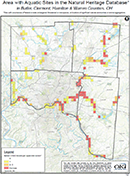
“Area with Aquatic Sites in the Natural Heritage Database in Butler, Clermont, Hamilton, and Warren Counties, Ohio.” Image courtesy of OKI.
Ohio-Kentucky-Indiana Regional Council of Governments (OKI)
- Key Accomplishments:
Established data-sharing agreements with three States; produced comprehensive database of regionally significant environmental resources
- IEF Steps Completed:
Steps 1-3
- Future Activities:
Finalizing stormwater management design and policy guide; renewing data-sharing agreements
- Lead Adopter Project Overview:
OKI established data-sharing agreements with State agencies in Ohio, Kentucky, and Indiana to integrate the States’ data with its own and produce maps of regionally significant environmental resources in the Cincinnati region.

Provide Technical Assistance
FHWA and AASHTO’s technical assistance efforts focus on ways for transportation, resource, and regulatory agencies and their partners to apply, institutionalize, and learn about Eco-Logical. These efforts include peer exchanges, on-call technical assistance workshops, and the Eco-Logical Starter Kit website.
Implementing Eco-Logical Peer Exchanges (Late 2015-2016)
| TRB Mid-Summer Workshop and Eco-Logical Peer Exchange September 22, 2015 San Diego, CA |
 |
Purpose: AASHTO and FHWA sponsored a peer exchange session at the 2015 TRB Environmental Analysis in Transportation Mid-Year Workshop. The session focused on “Better Transportation and Environmental Outcomes through Effective Partnerships.” |
Product: Information-sharing on how State DOTs and MPOs have effectively shared data and strengthened partnerships by applying an Eco-Logical approach
Attendees: Two IAP recipient agencies; State DOTs, including California and Maryland; and MPOs
|
| Implementing Eco-Logical IAP Peer Exchange October 14-15, 2015 Washington, D.C |
 |
Purpose: Implementing Eco-Logical IAP recipients
came together to share accomplishments and lessons learned on their IAP projects as well as discuss opportunities for the future of Eco-Logical, integrating Eco-Logical into the transportation planning process, and transforming Eco-Logical into “business-as-usual.” |
Product: Information-sharing on IAP accomplishments and lessons learned; integration of Eco-Logical
Attendees: Six IAP recipient agencies; four State DOTs (Alabama, Louisiana, Mississippi, and Tennessee); Eco-Logical Signatory Agencies (EPA, USFS, and USFWS)
|
| Implementing Eco-Logical Programmatic Mitigation Peer Exchange June 20, 2016 Fort Worth, TX |
 |
Purpose: Participants at AASHTO’s 2016 Standing Committee on Environment annual meeting attended the Programmatic Mitigation Peer Exchange to discuss and share experiences in developing and managing programmatic agreements for their agencies. |
Product: Information-sharing on programmatic mitigation
Attendees: Multiple State DOTs, including Alabama, Arizona, Colorado, Georgia, Ohio, and Oregon; Federal agencies
|
Images courtesy of CH2M HILL
FHWA created an On-Call Technical Assistance Team to provide responsive, individualized guidance and support to State DOTs, MPOs, and resource and regulatory agencies as they implement the Eco-Logical approach. The Team assists with organizational, technological, regulatory, or scientific issues. Below are examples of technical assistance workshops.
Implementing Eco-Logical Workshops (Late 2015-2016)
| Michigan DOT | Southeast Michigan COG Virtual Workshop November 5, 2015 Webinar Format |
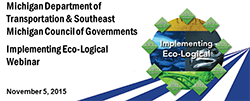 |
Purpose: Requested by MDOT and the Southeast Michigan Council of Governments (SEMCOG) for their staff, this “virtual” peer exchange brought together MPO leads for Implementing Eco-Logical IAP projects to share technical details, such as data sources and data variability; discuss MPO goals for working with State DOTs; and address how to measure performance metrics effectively. |
Product: Information-sharing among several MPO IAP recipients about Eco-Logical
Attendees: SEMCOG; IAP recipients, including MDOT, Atlanta Regional Commission, Charlottesville-Albemarle MPO, and Ohio-Kentucky-Indiana Regional Council of Governments
|
| South Carolina DOT Eco-Logical Workshop April 5-7, 2016 Charleston, SC |
 |
Purpose: FHWA and AASHTO conducted a workshop as a result of a South Carolina DOT (SCDOT) technical assistance request. Attendees discussed SCDOT’s mitigation needs, developed an understanding of the mitigation banking process in the context of Eco-Logical, and developed an action plan to implement mitigation under the Eco-Logical approach at SCDOT. |
Product: Information-sharing on mitigation banking; discussion and development of action plan
Attendees: 31 attendees, representing 9 organizations
|
| Colorado DOT Eco-Logical Workshop April 26-27, 2016 Lakewood, CO |
 |
Purpose: This workshop introduced Colorado DOT (CDOT) engineering and environmental staff to Eco-Logical while focusing on wildlife management and habitat connectivity and fragmentation in the context of highway transportation projects. Participants discussed approaches to develop and integrate mitigation strategies into projects, highlighted past wildlife assessments that have been completed using Eco-Logical, and shared recent advances in road mitigation for wildlife. |
Product: Information-sharing on wildlife crossing design options, planning and environmental considerations, and agency partnerships and adaptive management activities post-construction
Attendees: Scientists, engineers, and environmental practitioners from all five regions of CDOT; USFWS; consultants; university representatives
|
Images courtesy of CH2M HILL

Provide Technical Assistance
Visits to the Eco-Logical Starter Kit Website Per Month (2016)
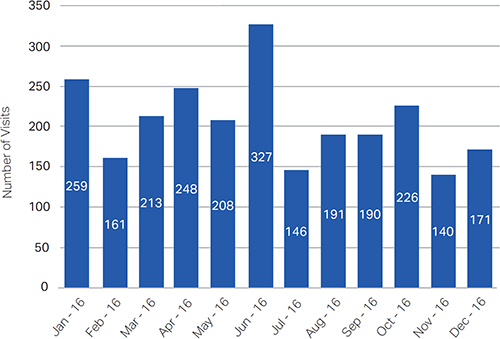
Starter Kit
FHWA and AASHTO released the Eco-Logical Starter Kit, available on the FHWA Eco-Logical website, in January 2015.
The Starter Kit offers an overview of the nine steps of the IEF and provides real-life examples of agencies applying these steps.
The Starter Kit includes research products, reports, case studies, and more. Since the Starter Kit was released, FHWA and AASHTO have seen consistent use by interested agencies and individuals.
Related Outreach
Webinar Topics and Number of Participants
(Late 2015 - Spring 2017)
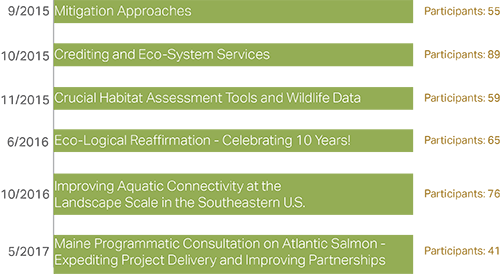
Webinar Participation by Agency Type

Eco-Logical Webinar Series
As part of its Eco-Logical Program, FHWA offers regular webinars that help foster cooperative learning opportunities.
The audience for the one-hour webinars often includes Implementing Eco-Logical IAP recipients, transportation agency practitioners, FHWA environmental staff, partner Federal agencies, State and regional resource agencies, academic researchers, and NGOs.
Over half of webinar participants are transportation practitioners seeking relevant applications of Eco-Logical in practice.
The webinars listed at right demonstrate the variety of topics covered in late 2015 through spring 2017, as well as the number of participants.

Develop a Business Case
Transportation agencies often find that applying an Eco-Logical approach can help them collaborate earlier and better integrate ecosystem considerations in project planning and delivery. FHWA is focused on demonstrating a “business case,” or the cost and time savings that Eco-Logical can help provide, through case studies and an in-depth business case example.
Eco-Logical Case Studies Featuring the IEF Nine Steps
| IEF Steps 1-4: Charlottesville-Albemarle MPO (CA-MPO) |
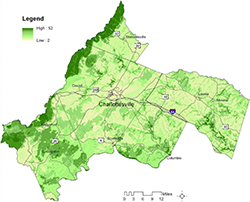
Map layer included in CA-MPO’s REF.
Image courtesy of CA-MPO.
|
Overview: CA-MPO’s parent organization, the Thomas Jefferson Planning District Commission, first developed an REF to help screen potential transportation projects. CAMPO then used the REF to engage stakeholders and evaluate alternatives for the Free Bridge Area Congestion Relief Project. |
Timeline: 8 years (2008-2015)
Budget: $405,731
Key Accomplishment: The REF incorporates 10 data layers on natural resources across the 5-county region. Five organizations (2 Federal, 2 State, and 1 non-profit) maintain the datasets.
|
| IEF Steps 5-6: North Carolina Department of Environmental Quality (NCDEQ) |

Example stream mitigation project.
Image courtesy of NCDEQ.
|
Overview: NCDEQ’s Division of Mitigation Services (DMS), in collaboration with the North Carolina Department of Transportation (NCDOT), established an advanced mitigation program. While NCDEQ did not follow the steps of the Eco-Logical approach directly, their process exemplifies many of the principles of Eco-Logical. |
Timeline: 16 years (2001-2016)
Budget: $38.2 million operating budget; $22.5 million in receipts (2014-2015)
Key Accomplishment: In 2014-2015, DMS helped NCDOT obtain permits for 85 transportation projects by providing 98,709 stream mitigation credits and 266 wetland mitigation credits.
|
| IEF Steps 7-9: Colorado Department of Transportation (CDOT) |
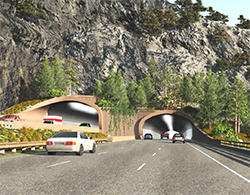
Artist rendition of I-70 improvements.
Image courtesy of CDOT.
|
Overview: CDOT implemented the Eco-Logical approach to guide mitigation projects and wildlife connectivity along the 144-mile Interstate 70 (I-70) Mountain Corridor in Colorado. CDOT developed a project-level REF over 3 years, finalized a Programmatic Environmental Impact Statement using the REF, and established two memoranda of understanding with its partners. |
Timeline: 4 years (2008-2011)
Budget: $361,093
Key Accomplishment: Through its Eco-Logical efforts, CDOT has successfully reduced congestion and improved safety along the corridor. CDOT estimates that corridor improvements will lower travel times by 15 percent and reduce crashes by 20-35 percent (65-80 crashes per year).
|
| Eco-Logical Case Study: Maine Department of Transportation (MaineDOT) Atlantic Salmon Programmatic Consultation |
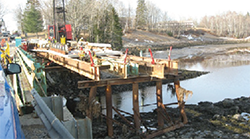
Typical trestle/temporary bridge construction.
Image courtesy of MaineDOT.
|
Overview: FHWA and MaineDOT developed a programmatic Endangered Species Act (ESA) consultation for the Federally listed endangered Atlantic salmon, incorporating concepts from the Eco-Logical approach. MaineDOT is also in the process of developing an in-lieu fee program (ILF) in conjunction with USACE. MaineDOT anticipates the programmatic consultation and ILF program will expedite ESA Section 7 consultations, allowing 75 percent of projects to be processed programmatically and substantially improving conservation outcomes for the Gulf of Maine Atlantic salmon population. |
Timeline: 5 years (2013-2017)
Budget: $256,000
Key Accomplishments:
- Collaborated closely with FHWA, USFWS, USACE, and the Maine Turnpike Authority
- Prioritized salmon habitat recovery watersheds throughout the State based on conservation value and mitigation priority.
- Developed a programmatic consultation for a range of transportation projects.
- Began development of an ILF program in partnership with USACE.
|
| Eco-Logical Business Case: Michigan Department of Transportation (MDOT) |
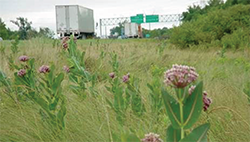
State-threatened Sullivant’s milkweed habitat in the I-75 right-of-way.
Image courtesy of MDOT.
|
Overview: The business case presents the cost savings achieved by MDOT’s use of the Eco-Logical approach. MDOT received SHRP2 funding to apply an Eco-Logical approach in the Interstate 75 (I-75) corridor in southeast Michigan.
MDOT developed and implemented an REF and Conservation Action Plan that facilitates rebuilding of the I-75 corridor in five phases, the first of which was completed in 2015.
The partnerships established via this project helped MDOT gain consensus among stakeholders and effectively use land resources and data sets managed by other agencies. As a result, MDOT has been able to establish a framework for enhanced environmental outcomes in concert with cost and time savings for highway projects. The achievements of this project are expected to carry over to related highway reconstruction projects statewide.
|
Timeline: 5 years (2013-2017) (Phase I)
Budget: $250,000
Business Case Highlights: MDOT has realized a number of benefits through use of the Eco-Logical approach, including:
- Achieved savings of over $1,000,000 in the first phase of the project, largely due to reduced land acquisition costs.
- Reduced permitting timeframes by up to two years.
- Strengthened partnerships and coordination with natural resource agencies.
- Enhanced environmental outcomes for wetlands and threatened and endangered species.
|
For more information on the case studies and business case, visit the website: www.environment.fhwa.dot.gov/Env_initiatives/eco-logical.aspx

The four Community of Practice webinars covered topics, such as:
- How to Approach your Transportation Environmental Needs Eco-Logically
January 2017
Participants: 151
Discussed mitigation for wetlands impacts and how to identify resources to avoid impacts in a planning area.
- Innovative Mitigation Contracting and Financing
October 2016
Participants: 100
Featured innovative options for planning, financing, and implementing mitigation sites.
- Pollinator Habitat Programs
July 2016
Participants: 164
Highlighted pollinator programs and ways to manage pollinator habitat collectively and fund related programs
- Wildlife and Transportation
March 2016
Participants: 88
Showcased statewide wildlife connectivity assessments and the use of data to track movement patterns.

Community of Practice Webinars
In 2016, FHWA and AASHTO launched four “Community of Practice” webinars, an extension of the FHWA Eco-Logical webinar series.
The Community of Practice webinars address key environmental topics in transportation, such as mitigation financing and wildlife crossings.
FHWA and AASHTO designed the community of practice model to continue the exchange of information after SHRP2 activities have concluded.
Overall, the goal is to create a self-sustaining network of practitioners to share knowledge, best practices, and ideas, and to facilitate technical assistance.
SHRP2 PlanWorks Integration
Like Implementing Eco-Logical, PlanWorks is a SHRP2 solution. It focuses on collaborative decisionmaking during the transportation planning and project development process.
PlanWorks specifically identifies the key decision points and challenges that practitioners often encounter in planning and programming transportation projects.
FHWA is currently leading an effort to integrate the common elements of PlanWorks and Implementing Eco-Logical. For example, the natural environment application of PlanWorks can help Eco-Logical practitioners implement the steps of the IEF.
For more information, visit: https://fhwaapps.fhwa.dot.gov/planworks/

Develop Communications + Outreach Materials
Related Outreach
Eco-Logical 10-Year Anniversary Video
To mark the 10-year anniversary of Eco-Logical in 2016, FHWA produced a short video highlighting Eco-Logical’s shift as a principle to a standard way of doing business.
The video celebrates the role of the eight Federal signatory agencies and their nationwide commitment to prioritize collaborative infrastructure and conservation planning at the landscape scale.
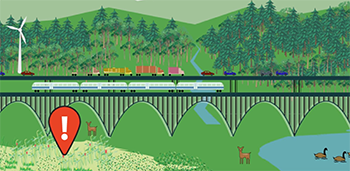
Implementing Eco-Logical Communications Plan
At the start of the SHRP2 Implementing Eco-Logical Program, FHWA and AASHTO developed an internal communications plan to ensure that the program’s messaging was consistent and accessible to stakeholders.
The plan identifies target audiences for outreach and goals for marketing and communication. It also defines key messages, such as:
- Implementing Eco-Logical results in better environmental outcomes and lower transaction costs.
- Implementing Eco-Logical reduces redundancy and increases the efficiency, transparency, and predictability of the transportation delivery process.
Implementing Eco-Logical Outreach Plan
The outreach plan provides an overview of strategies to communicate ongoing activities and information about the SHRP2 Implementing Eco-Logical Program and the Eco-Logical approach.
Strategies include:
- Newsletters;
- Training opportunities;
- Webinars;
- Conference posters and presentations;
- Signatory Agency meetings; and
- Outreach through the Eco-Logical Champions.
Program Evaluation
From 2015-2016, FHWA led a retrospective, independent Research and Technology evaluation of the SHRP2 Implementing Eco-Logical Program and of related FHWA Eco-Logical Program activities. It focused on input from the 13 SHRP2 Implementing Eco-Logical IAP recipients and the 15 past recipients of the FHWA Eco-Logical Grant Program (in 2007). The evaluation explored how State DOTs and MPOs are applying the Eco-Logical approach to better understand the impacts that the SHRP2 Implementing Eco-Logical Program has had and continues to have.
Evaluation Questions
The evaluation team considered the following questions for the effort:
- How has FHWA enabled State DOT and MPO stakeholders to adopt the Eco-Logical approach?
- How are State DOT and MPO stakeholders incorporating the Eco-Logical approach into their business practices?
- How have the Eco-Logical Program and approach contributed to improved project delivery processes and environmental mitigation?
Evaluation Methodology
The evaluation team used multiple research methods, including:
- Literature and document review;
- Participation in the SHRP2 Implementing Eco-Logical IAP Peer Exchange, held in October 2015;
- Stakeholder interviews;
- Analysis of Eco-Logical steps completed by IAP and grant recipients; and
- Qualitative coding analysis of stakeholder comments.
Evaluation Key Findings
Key findings included:
- FHWA funding allowed agencies to pursue previously planned activities sooner, more comprehensively, and with broader stakeholder buy-in.
- Eco-Logical allowed for increased data acquisition and sharing and development of extensive databases of natural resources and infrastructure.
- Eco-Logical led to improved relationships with partners and improved integrated planning and project prioritization processes.
As part of the evaluation, the team asked State DOT and MPO contacts to share information on the benefits and challenges they have found from using the Eco-Logical approach. From this research, the team then developed recommendations and future considerations for the FHWA Eco-Logical Program.
Below are highlights from the feedback shared by State DOTs and MPOs as well as future recommendations for the program.
Benefits of Implementing Eco-Logical
“The Eco-Logical approach has now been adopted by the policy board and is a part of the long-range planning structure. We have a real rationale to spend meaningful time on this now.”
-MPO
“The Eco-Logical work has been the impetus for further collaboration, far beyond data delivery. Through continued and consistent communication, [agencies] have found areas where we can partner and have a greater understanding of each other’s missions.”
-State DOT
“The product that we develop isn’t as important as the relationships [we] developed. I believe that there are ever-strengthening relationships between [our agency] and the resource agencies as a result of this project.”
-State DOT
Challenges of Implementing Eco-Logical
“There was a lot of staff turnover at [multiple agencies] after Eco-Logical was completed. People who had been champions retired or moved on, and there wasn’t anyone who was sufficiently energized about this process to promote it.”
-Resource Agency
“The single largest challenge has been overcoming entrenched political opposition to transportation projects. We discovered that no amount of planning and outreach can overcome political obstacles, especially when dealing with multiple jurisdictions with very different approaches and visions of transportation systems.”
-MPO
“The success of the Eco-Logical process depends on the personality and mentality of the champion. Someone must really believe in it and dedicate themselves to its success. It cannot be mandated or rely on data alone.”
-State DOT
Recommendations
- Provide additional support in the form of peer exchanges, webinars, and case studies on Eco-Logical.
- Dedicate additional resources to the later steps of Eco-Logical.
- Identify additional opportunities to engage regional-level staff about Eco-Logical in order to build awareness and ensure consistent information is provided to stakeholders.
- Investigate challenges in obtaining buy-in for Eco-Logical from local agencies that implement projects and share effective practices in overcoming these challenges.
- Further support agencies in adopting quantifiable performance measures and tracking progress over time.
- Use a set of consistent questions or tracking methods to evaluate the progress of recipients from year to year.
A National Perspective
The concept of ecosystem- or landscape-scale planning, development, and mitigation dates back to the late 1990s, during a time when much of the country was facing rapid development pressure. This pressure led to alternative approaches to the project delivery process, environmental review, and compensatory mitigation that both expedited project delivery and produced better environmental outcomes. Earlier environmental legislation also helped set the stage for the Eco-Logical approach and the trend toward widespread adoption across the country. Today, a landscape-scale approach is becoming the new norm.
Eco-Logical at the National Stage
Early National Environmental Actions
Foundational environmental laws, such as the National Environmental Policy Act (1969) and the Endangered Species Act (1973), set in motion requirements for consideration of the environment when developing any type of infrastructure. Over time, the application of each law has evolved, as the field has matured.
Eco-Logical Takes Form
From 2002 to 2008, the concept of a landscape-scale approach began to appear on a national scale. A wide array of Federal agencies began to explore how to apply and test this type of approach across the field.
New Legislative Connections
Several laws, regulations, policies, executive actions, and programs, including the FAST Act, directly encourage the use of a landscape-scale approach. Eco-Logical provides a methodology for accomplishing these new goals and requirements. Executive actions include:
- Executive Order (EO) 13274: Environmental Stewardship and Transportation Infrastructure Project Reviews (2002)
- EO 13352: Facilitation of Cooperative Conservation (2004)
- Council on Environmental Quality/Office of Management and Budget Memorandum on Incorporating Ecosystem Services into Federal Decision Making (2015)
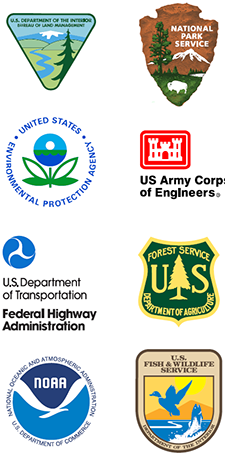
Logos of the Eco-Logical Signatory Agencies (clockwise, from top left): BLM, NPS, USACE, USFS, USFWS, NOAA, FHWA, and EPA.
Signatory Agency Support
2016 marks the 10-year anniversary of a significant milestone for Eco-Logical and the Eco-Logical Signatory Agencies..
FHWA continues to support collaboration among the Signatory Agencies, including through bi-annual in-person meetings. These meetings focus on continued implementation and cross-agency support of the Eco-Logical approach or other agency initiatives under the Eco-Logical umbrella. FHWA hosted two meetings in 2014/2015, in July 2014 and January 2015.
The Signatory Agencies are currently working on activities for the 10th anniversary of Eco-Logical in 2016.
Ten years ago, eight Federal agencies (the “Signatory Agencies”) and four State DOTs collaboratively developed a shared vision of how infrastructure development and ecosystem conservation can be integrated to harmonize economic, environmental, and social needs and objectives. This vision became “Eco-Logical.”
Since 2006, the eight Signatory Agencies have strived to implement a landscape-scale approach within their agency and pursued opportunities to collaborate across agencies.
This formula has served well since Eco-Logical’s inception and will continue to do so in the future. The Signatory Agencies’ commitment to the Eco-Logical approach remains strong.
The agencies’ vision for Eco-Logical in the next 10 years and beyond continues a focus on partnerships and implementing Eco-Logical into everyday practice. The Eco-Logical Signatory Agencies will continue to foster a collaborative, interagency dialogue and expand the influence of Eco-Logical and the landscape-scale approach.
Connections to Federal Initiatives
Several Federal directives, such as the FAST Act, FHWA’s Planning and Environment Linkages, and the Red Book can help support implementation of Eco-Logical at the local, regional, State, and national levels.
Fixing America’s Surface Transportation Act
The FAST Act, signed into law in December 2015, reauthorizes the Federal surface transportation program through Fiscal Year 2020. Several provisions in the FAST Act relate directly to the Eco-Logical approach:
- Section 1304: Efficient Environmental Reviews for Project Decisionmaking
- Section 1305: Integration of Planning and Environmental Review
- Section 1306: Development of Programmatic Mitigation Plans
- Section 1313: Aligning Federal Environmental Reviews
For more information, visit: www.fhwa.dot.gov/fastact
Planning and Environment Linkages
The Eco-Logical approach is closely linked to FHWA’s Planning and Environment Linkages (PEL), a collaborative and integrated approach to transportation decisionmaking that: 1) considers environmental, community, and economic goals early in the transportation planning process; and 2) uses the information, analysis, and products developed during planning to inform the environmental review process. Eco-Logical could, for example, be used to address the biological components of a PEL program.
The 2015 Red Book
The Red Book encourages more widespread adoption of synchronized review processes and more effective coordination among transportation, resource, and regulatory agencies during environmental and permit reviews. It specifically mentions Eco-Logical as a way to implement a watershed approach.
Every Day Counts-4

EDC-4 logo. Image courtesy of FHWA’s Center for Accelerating Innovation
FHWA’s Integrating NEPA and Permitting innovation under Every Day Counts-4 (EDC-4) was designed to help Federal, State, and local agencies conduct concurrent, synchronized environmental and permitting reviews. Integration allows for more effective and efficient regulatory reviews, leading to better environmental outcomes and time and cost savings.
FHWA’s NEPA and Permitting implementation team will offer a full suite of outreach, training, and technical assistance in 2017-2018.
For more information on EDC-4, visit: www.fhwa.dot.gov/innovation/everydaycounts/edc_4/nepa.cfm
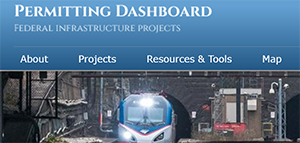
Screenshot of the Permitting Dashboard. Image courtesy of U.S. DOT
Federal Permitting Dashboard
The Permitting Dashboard is an online tool for Federal agencies, project developers, and the public to track the Federal government’s permitting and review process for large or complex infrastructure projects. Starting in January 2016, agencies were required to report performance schedules for all new infrastructure projects that meet certain size and complexity criteria.
The Dashboard will significantly increase the transparency of the permitting and review process and help shorten review timelines by encouraging early coordination and synchronization of agency review schedules.
For more information, visit: www.permits.performance.gov
Transportation Liaisons

Logo of the FHWA Transportation Liaison Community of Practice. Image courtesy of FHWA
FHWA both supports “field” transportation liaisons and funds positions for National Transportation Liaisons. In addition, FHWA hosts a Transportation Liaison Community of Practice.
Field liaisons are personnel housed in State or Federal resource and regulatory agencies. They help facilitate environmental and permitting review processes by providing technical assistance and coordinating agency response to State DOTs. The National Transportation Liaisons serve as FHWA’s connection to Federal resource and regulatory agencies at the national level.
For more information, visit: www.environment.fhwa.dot.gov/Env_initiatives/liaisonCOP/
Future Direction of Eco-Logical
Future Focus of the Eco-Logical Program
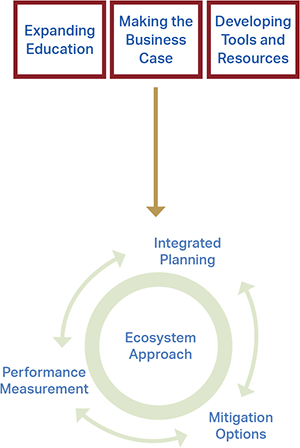
Since its launch in 2006, Eco-Logical has grown in use and awareness. The SHRP2 Implementing Eco-Logical Program has been a major contributor to Eco-Logical’s success. FHWA plans to continue its support for Eco-Logical moving forward.
FHWA will continue to manage the FHWA Eco-Logical Program, as it transitions from the SHRP2 Implementing Eco-Logical phase.
The future FHWA Eco-Logical Program will focus on:
- Integration of the FHWA Resource Center into post-SHRP2 technical assistance activities.
- Technical assistance to practitioners about the application of techniques and tools.
- Integration of Eco-Logical into complementary programs, training, and outreach (e.g., PEL, EDC-4).
- Coordination with other U.S. DOT modes and external partners to adopt the Eco-Logical approach.
In the short term, FHWA will focus on recommendations from practitioners, as identified through SHRP2 Implementing Eco-Logical activities, including:
- Distributing Eco-Logical outreach materials for new agency practitioners to learn more about the approach and the opportunities it offers.
- Exploring ways to promote Eco-Logical among senior leadership at transportation agencies.
- Investigating means to support agencies in making a business case and demonstrating quantifiable benefits.
- Continuing to support tools that simplify the creation of an REF for transportation agencies with limited Geographic Information Systems (GIS) capacity and resources.
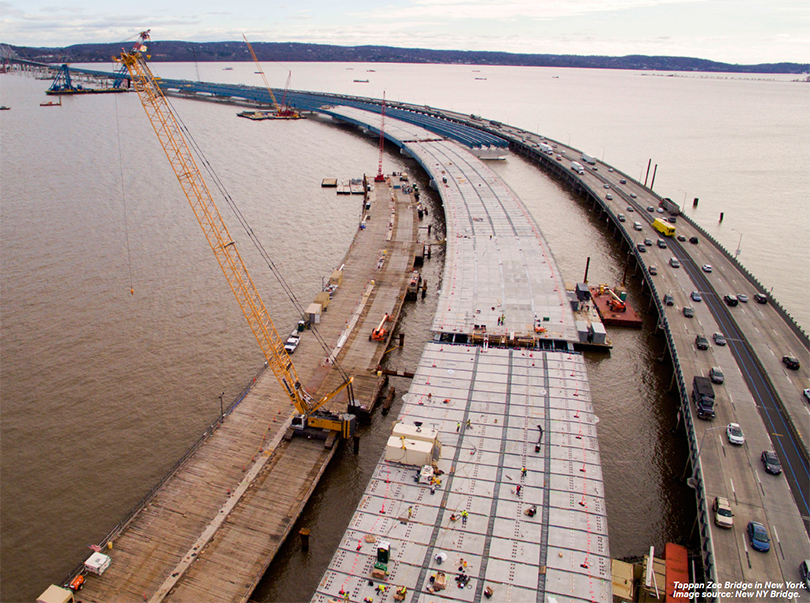
Appendices
Implementation Assistance Program (IAP) Project Summaries
Lead Adopter Incentives IAP Project Summaries

Atlanta Regional Commission (ARC)
Developing an REF for the Proctor Creek Environmental District
Schedule: June 2013-December 2015. Total cost: $250,000.
Project Goals
ARC is developing and implementing a Regional Ecosystem Framework (REF) and creating a strategic framework for the Proctor Creek Environmental District (PCED)—a key watershed in the Atlanta metropolitan area—in order to expand the types of ecological and economic data used for prioritizing new transportation projects in the region.
Process
ARC convened a stakeholder committee to facilitate coordination with partners, and hired a consultant to study the fiscal, economic, and environmental effects of implementing an REF near a central business district. ARC also tested methodologies for inclusion in a decision support tool, a component of the strategic framework, which will help guide infrastructure investment in the PCED over the next few decades.
Recent Activities and Accomplishments
ARC completed its IAP project in December 2015. For the project, ARC:
- Held internal and external Proctor Creek stakeholder meetings to coordinate and prioritize information needs with participants, including from the City of Atlanta and Metro Water District.
- Hired a consultant to complete a market economic analysis in the PCED, which analyzed the links between economic development and environmental resources.
- As part of this activity, ARC sought to draw connections between economic development and environmental outcomes such as watershed restoration.
- ARC also met with Federal and State project partners to share information and reaffirm the commitment to link economic factors with environmental considerations in the REF.
- Used the REF data to create draft maps and decision criteria for inclusion in ARC’s future regional transportation plans.
- Posted updated REF data online to make it more accessible to project partners.
- Analyzed previous project selection methods to determine gaps that should be included in the decision support tool.
Since completing its IAP project, ARC has:
- Continued a partnership with the Atlanta University Center (AUC) to provide technical assistance as part of the development of the AUC/Vine City English Avenue Eco-District, which is wholly contained within the Proctor Creek watershed.
- Continued quality improvements to its geospatial capabilities and existing data layers, including coordination with the U.S. Fish and Wildlife Service and the Georgia Department of Natural Resources to create higher-resolution habitat data layers.
- Refined its analytical methodology by overlaying proposed projects in the Regional Transportation Plan and Transportation Improvement Program with REF information to visualize the intersection of the data layers.
Future Steps
Moving forward, ARC plans to:
- Incorporate improved data layers into the PCED REF.
- Partner with the Georgia Department of Transportation Office of Environmental Services to update a statewide geo-database and improve functionality and analytics.
- Improve knowledge of historical and cultural data by performing an inventory of available resources.
Insights on Eco-Logical
- Effective early communication with stakeholders is important to leverage existing knowledge and share information. ARC worked closely with the Proctor Creek Community Group early on in the project, participating in meetings and incorporating feedback into deliverables.
- Eco-Logical has created opportunities for ARC staff from different departments to collaborate, allowing the agency’s specialists in transportation, land use, and GIS to develop a more holistic view of projects.
- One of the biggest challenges ARC faced was the focus on the metropolitan/regional scale rather than statewide. Messaging around the REF was an important part of ARC’s effort, as it worked to demonstrate how impacts could go beyond MPO boundaries and did not solely affect transportation.
Return to Project Summaries List ↑

Charlottesville-Albemarle Metropolitan Planning Organization (CA-MPO)
Testing Application of an Existing REF in Transportation Projects and Conservation Prioritization
Schedule: June 2013-October 2015. Total cost: $250,000.
Project Goals
Through its IAP Lead Adopter project, CA-MPO is advancing project alternatives for the Free Bridge Area Congestion Relief Project to alleviate significant congestion issues on the US-250 crossing of the Rivanna River in Virginia.
Process
CA-MPO convened a 33-member stakeholder committee to identify and rank project alternatives, and used its existing Regional Ecosystem Framework (REF) to establish a weighted ranking system for evaluating each alternative’s environmental impacts.
Recent Activities and Accomplishments
- Successfully added a pilot project to CA-MPO’s long-range transportation plan (LRTP), as a result of earlier IAP project efforts by the stakeholder committee to develop preferred alternatives for consideration on the agency’s LRTP Visioning List.
- The list identifies important regional projects and priorities for either future inclusion on CA-MPO’s constrained project list or to prioritize for State transportation funding.
- Fully integrated the REF into the region’s transportation decisionmaking process, using the weighted, REF-based ranking system developed by the stakeholder committee.
- Coordinated with the Virginia Department of Transportation (VDOT), resulting in the VDOT Culpeper District’s issuance of a formal letter of endorsement for CA-MPO’s use of Eco-Logical during the project planning process.
- Prepared a white paper that documents how the Eco-Logical approach and REF satisfy Virginia’s statewide requirement for transportation agencies to use environmental performance measures.
- Developed a user-friendly website and user guide about the CA-MPO REF tool and process.
- Produced content for and delivered a session as part of the CA-MPO Transportation Planning Academy.
- The event, held in October 2015, shared information about Eco-Logical with over 30 staff, elected officials, and citizens in the region.
Future Steps
Moving forward from its IAP project, CA-MPO is focusing on how to advance the pilot project included in the LRTP.
- CA-MPO is gathering foundational data to prepare and submit an application for State funding.
- If the pilot project receives funding, CA-MPO will address compared alternatives with VDOT, which will serve as the lead agency, and potentially use principles of FHWA’s Planning and Environment Linkages approach.
Insights on Eco-Logical
- Eco-Logical is especially valuable to smaller MPOs because it provides the fundamentals of advanced planning, which can later be helpful when competing at the State and national levels.
- For CA-MPO, applying Eco-Logical has helped foster good communication, relationships, and information-sharing between internal and external agencies, particularly with VDOT.
Return to Project Summaries List ↑

Idaho Transportation Department (ITD)
Coordinating Transportation Planning and Wildlife Management
Schedule: June 2013-December 2016. Total cost: $275,000.
Project Goals
ITD is working with the Idaho Department of Fish and Game (IDFG) to implement datasharing protocols and develop Species of Greatest Conservation Need (SGCN) data layers in order to improve interagency coordination, streamline transportation project development, and facilitate stewardship of natural resources. ITD received $25,000 in User Incentive and $250,000 in Lead Adopter funding.
Process
For its User Incentive project, ITD updated its Memorandum of Understanding (MOU) with IDFG to include new protocols for datasharing and interagency coordination between transportation planning and wildlife management. For the Lead Adopter project, ITD and IDFG developed a web service that allows ITD to view real-time IDFG data in IPLAN, ITD’s cloud-based portal for spatial data. IDFG is updating its fish and wildlife data, including its State wildlife action plan and other relevant geospatial layers, and developing data delivery applications.
Recent Activities and Accomplishments
- Continued collaboration with IDFG to discuss data-sharing efforts and interagency coordination at regular meetings for districts and regions.
- Refined existing IDFG data layers to improve usability in IPLAN and make data more accessible.
- Completed SGCN data sets and used the MOU with IDFG to refine and share the datasets via IPLAN and the Conservation Planner web tool.
- Provided training to ITD staff to ensure that IDFG’s data is used consistently and effectively.
- Demonstrated to the FHWA Idaho Division how the data would be used during the project development process for ITD projects.
- Continued identifying needs for fish passage barrier data.
- Compiled lessons learned, successes, and challenges into a formal document.
- Met with consultant to prepare a scope of work to develop a web tool for easily accessing IDFG data sets (later determined that work would be conducted by IDFG).
- Reviewed first version of web tool developed by IDFG.
- Provided feedback to IDFG to revise the web tool to better meet the needs of ITD.
- For example, ITD requested that the Conservation Planner web tool have the ability to generate a species report.
Future Steps
Moving forward from its IAP project, ITD plans to:
- Update its planning manual to help set expectations about how to use IDFG data and encourage its transportation planners to use this information in transportation planning and project development.
- Continue to work with IDFG to develop protocols for uploading new data gathered by ITD to the IDFG database.
- Continue testing the Conservation Planner web tool. Testing will be ongoing until the final tool is ready for production (anticipated summer 2017).
Insights on Eco-Logical
- The creation of a web service that allows ITD and IDFG to share and access data through IPLAN has established a greater wealth of knowledge and fostered interagency collaboration that will exist well beyond the IAP project.
- Interagency meetings were an effective way for ITD and IDFG to establish strong relationships and build trust by addressing agency mission statements and establishing communication methods.
- Eco-Logical has provided ITD employees, stakeholders, and members of the public with a greater understanding of wildlife conservation, leading to an increase in acceptance and prioritization of wildlife conservation.
Return to Project Summaries List ↑

Maine Department of Transportation (MaineDOT)
Streamlining Endangered Species Act Consultations
Schedule: June 2013-Summer 2017. Total cost: $250,000.
Project Goals
MaineDOT is working to reduce the impacts of transportation projects on Atlantic salmon and review timeframes for Endangered Species Act (ESA) consultations for State transportation projects classified as Categorical Exclusions under the National Environmental Policy Act.
Process
MaineDOT streamlined its internal process for ESA consultations, hired a consultant to develop a decision support tool to aid in landscape-level decisionmaking along transportation corridors, and is working with the U.S. Fish and Wildlife Service (USFWS) to develop and implement a Programmatic Biological Assessment (PBA) and in-lieu fee (ILF) mitigation instrument.
Recent Activities and Accomplishments
- Finalized the PBA for Atlantic salmon, which seeks to reduce the number of individual ESA consultations and the timeframe for receiving concurrence on effects.
- Received the final Programmatic Biological Opinion (PBO), which details USFWS research of MaineDOT’s consultation request and PBA.
- Completed a draft ILF mitigation prospectus for Atlantic salmon and received notice to proceed to a draft instrument from the U.S. Army Corps of Engineers (USACE).
- Updated the GIS-based corridor-level decision support tool, which scores potential projects based on level of risk.
- Developed a strategy to use the tool in MaineDOT’s asset management process, assessing ecological, hydrologic, and structural risk in resource allocation.
- Received a State Transportation Innovation Council grant for the decision support tool to monitor screenings and consultations.
- Documented the changes in MaineDOT’s workflow for ESA consultations in order to institutionalize the process changes.
- Increased interagency communication and cooperation by organizing and facilitating face-to-face and over-the-phone meetings.
- Collaborated with USFWS to use data layers to identify salmon habitat and determine the tier required for replacing different types of habitat.
- Finalizing a publicly available online library of construction and design practices to help educate partner agencies, contractors, and the general public about best practices.
Future Steps
- Continue working with The Conservation Fund to finalize the Atlantic salmon ILF mitigation instrument.
- Finalize position transfer to the Maine Department of Marine Resources for sponsorship and administration of the Atlantic salmon ILF program.
- Work with USFWS and USACE to modify a 2015 agreement that requires an individual USACE permit for any project with a nexus to Atlantic salmon.
Insights on Eco-Logical
- Eco-Logical has significantly reduced impacts to salmon habitat in Maine. Through the IAP project, the process of preserving habitat has become more efficient, and there are fewer disagreements now among agencies over fish passage. The focus has become about outcomes and not process.
- Eco-Logical has cultivated strong interagency relationships and communication. Throughout the IAP project, MaineDOT and its partners met regularly to strengthen trust and establish standard operating procedures to work together toward a common goal.
Return to Project Summaries List ↑

Michigan Department of Transportation (MDOT)
Implementing an Eco-Logical Approach in the I-75 Corridor in Southeast Michigan
Schedule: June 2013-January 2017. Total cost: $250,000.
Project Goals
MDOT is working to develop a robust, collaborative Regional Ecosystem Framework (REF) for the Southeast Michigan/Lake Erie coastal region that will identify priority locations for mitigation and conservation, resulting in improved environmental outcomes and increased regulatory certainty for projects along the Interstate 75 (I-75) corridor.
Process
MDOT established a Technical Advisory Committee (TAC) to assist in the development of the REF. The TAC includes representatives from more than 10 resource, regulatory, and planning agencies. MDOT will also execute agreements with regulatory agencies to improve coordination, share data, and implement the REF. In addition, MDOT will establish Conservation Plan Action Teams to develop a Conservation Action Plan (CAP).
Recent Activities and Accomplishments
MDOT completed its IAP project in January 2017. For the project, MDOT:
- Worked with the TAC to choose six conservation targets for the study area: coastal tributaries; wildlife connectivity; globally rare natural communities; aerial migrants; migratory fish; and coastal wetlands.
- A group of stakeholders and experts then evaluated the threats to each target.
- Executed a statewide cooperative GIS agreement in January 2015 with the Michigan Department of Natural Resources (DNR) to facilitate data-sharing between the two agencies.
- Identified four primary threats to the six conservation targets: roads and run-off; agricultural non-point source pollution and drainage systems; invasive species; and urban development/non-point run-off.
- Developed a CAP to address the four areas of threat for both the reconstruction of I-75, and for MPO planning and local officials.
- Executed a Master Agreement Concerning Interagency Collaboration with the Michigan DNR in May 2015.
- Finalized the REF and CAP and used them to help inform activities for transportation projects in the region.
- Worked with the Southeast Michigan Council of Governments (SEMCOG) to publish a final report and post GIS data from the study on the SEMCOG website.
- Coordinated with SEMCOG to integrate the different data layers and processes from creating the REF into the MPO’s transportation planning process.
Building on its IAP project, MDOT:
- Supported the submission of a successful and recently awarded National Oceanic and Atmospheric Administration grant application to educate middle and high school students on the relationship between invasive species and transportation networks.
Future Steps
Moving forward, the partners plan to:
- Post final materials and mapping data to SEMCOG’s website for the public to access.
- Continue participation in MDOT’s largest plant mitigation project, which has used the strong relationships and increased effective coordination developed through Eco-Logical.
- Develop a Corridor Invasive Species Management Plan as a reference guide for agencies.
- Create space at high-priority wildlife crossings below I-75 with wider culverts and fencing to direct wildlife away from the highway.
The implementation of MDOT’s IAP project will restore 35 acres of coastal wetland for mitigation. MDOT will restore habitats, create wildlife passages, and install curbs that do not trap reptiles as part of its comprehensive approach.
Insights on Eco-Logical
- Compiling GIS data such as land use and water quality into one place improved coordination and relationships among partners. The consolidated data will be helpful for future wetland impact mitigation and road-stream crossing projects and has taken resource agency relationships to a new working level.
- MDOT’s IAP project strengthened its relationship with the Michigan DNR and further exposed transportation planners and design staff to conservation planning, increasing knowledge and collaboration.
- MDOT observed a reduction in time needed to perform environmental reviews required under the National Environmental Policy Act, in part due to its early and continued coordination with the Michigan Department of Environmental Quality (DEQ). Approximately two years were saved in processing, as DEQ was able to issue permits more quickly as a result from the wetland mitigation material produced under the IAP project.
Return to Project Summaries List ↑

North Central Texas Council of Governments (NCTCOG)
Applying an REF and Assessing Mitigation Opportunities
Schedule: July 2013-June 2016. Total cost: $225,000.
Project Goals
NCTCOG updated data used in its Regional Ecosystem Framework (REF) and applied the REF to identify potential mitigation banking sites in the region and potential conservation areas in a new roadway corridor.
Process
NCTCOG updated its REF and developed maps identifying subwatersheds with relative importance for ecosystem value, green infrastructure, and water resources. NCTCOG worked with agency partners to apply the REF to a pilot corridor—the Loop 9 Southeast Corridor—to determine the feasibility of using the REF for corridor-level conservation and mitigation. NCTCOG also incorporated the REF while working with agency partners to identify potential sites for future wetland and stream mitigation banks that would generate the greatest ecological benefit while meeting the demand generated by planned roadway projects.
Recent Activities and Accomplishments
NCTCOG completed its IAP project in June 2016. For the project, NCTCOG:
- Updated the REF to ensure that the tool uses the most current data available.
- Developed the Loop 9 Corridor Area Conservation Vision, a pilot process that applies the REF to a corridor-level conservation strategy.
- Modified the project scope to include a wetland and stream mitigation assessment; the assessment was conducted with input from stakeholders, including resource and regulatory agencies.
- Finalized an interactive mapping website that houses the REF and allows partners to upload proposed infrastructure project layers.
- Incorporated aspects of the REF into environmental scoring for projects in its long-range transportation plan (LRTP).
Since completing its IAP project, NCTCOG has:
- Continued collaborating with stakeholders, including the U.S. Army Corps of Engineers (USACE), non-profit organizations, and local governments, to promote mitigation and environmental stewardship in the North Central Texas region.
- Participated in outreach opportunities to share information about IAP projects, including one webinar and one presentation.
Future Steps
- Continue updates to the REF and existing data layers to provide up-to-date information and reflect current regional conservation priorities.
- Continue strengthening relationships with resource and regulatory partners to be engaged in one another’s strategic planning processes.
- Collaborate with USACE to post a link to the REF website from the USACE website.
- Facilitate a forum for stakeholders that provides guidance on mitigation banking.
- Explore the possible creation of a new methodology for environmental scoring and incorporation of environmental factors into decisionmaking for the LRTP.
- Identify opportunities for sustainability and environmental stewardship during planning and project development of a roadway that may travel through a preserved greenbelt.
- Assess mitigation needs with each new LRTP.
Insights on Eco-Logical
- NCTCOG’s updated REF enables a focus on natural environmental factors in its planning region, such as species rarity and quantity of habitat.
- NCTCOG has observed a growing interest within its agency in environmental stewardship and a push to fund related efforts, including tree planting, wetland restoration, and educational activities.
- NCTCOG has strengthened relationships and increased effective communication both internally and cross-agency through the Eco-Logical approach.
Return to Project Summaries List ↑

Pikes Peak Area Council of Governments (PPACG)
Establishing an Integrated Regional Mitigation Plan
Schedule: June 2013-July 2015. Total cost: $218,000.
Project Goals
PPACG is the designated metropolitan planning organization for the Colorado Springs urbanized area for the Pikes Peak region. PPACG updated its Regional Ecosystem Framework (REF) for the region and developed an Integrated Regional Mitigation Plan (IRMP) to guide mitigation activities in the area.
Process
PPACG worked with a stakeholder group to develop a prioritized list of conservation targets and mitigation sites and to update the region’s REF. PPACG is also developing an online platform for the IRMP, which will allow partners to identify transportation projects and potential mitigation sites associated with the project’s impacts and partner agency projects.
Recent Activities and Accomplishments
PPACG completed its IAP project in July 2015. For the project, PPACG:
- Held 4 stakeholder steering committee meetings, which resulted in the identification of 180 conservation targets to include in the IRMP.
- Mapped more than 300 transportation projects that will be included in the 2040 update of the PPACG Regional Transportation Plan (RTP).
- Developed a conservation priority rating system and, for each proposed transportation project, estimated the number of acres of affected land.
- Developed an IRMP spatial database that provides a list of mitigation targets, with total acres of mapped occurrences and impacted areas.
- Created a list of conservation elements, with conservation status ranks and mitigation bin assignments; each bin shows different types of mitigation targets.
- Identified potential mitigation sites.
After the project’s completion, PPACG experienced challenges with its website through which its web-based IRMP is available. As part of the website re-launch, PPACG plans to provide mapping information in an open source format. PPACG is in the process of:
- Hiring a consultant and web developer to provide PPACG with technical support.
- Coordinating with State agencies to recover lost data.
Other activities include:
- Continued coordination with local, State, and Federal agencies, including the Concord Metropolitan District, which is forecasting land use changes and updating its comprehensive plan using critical habitat information provided by PPACG.
- Provided wetland mitigation data from the REF to a local entity that is now using this data to secure funding for a mitigation bank.
Future Steps
- Facilitate a discussion with the Transportation Environmental Research Council (TERC), led by the Federal Highway Administration and the Colorado Department of Transportation (CDOT), to advocate for conservation and mitigation priorities as part of the RTP process.
- Continue coordination with CDOT about the Eco-Logical approach and the benefits it offers.
Insights on Eco-Logical
- When engaging partners, PPACG tailored its message to emphasize how Eco-Logical would benefit their missions and the need to collaborate on joint project opportunities.
- Consider how agency interests are represented in the stakeholder engagement process. PPACG coordinated with 19 agencies and organizations during the course of its IAP project and used webinars to allow stakeholders to participate remotely.
- PPACG is strengthening its partnership with CDOT to spread awareness of Eco-Logical, particularly among State and Federal resource and regulatory agencies that might be more familiar working with State departments of transportation.
Return to Project Summaries List ↑
User Incentives IAP Project Summaries

Association of Monterey Bay Area Governments (AMBAG)
Developing an REF for the Monterey Bay Area Regional Mitigation Plan
Schedule: June 2013-July 2014. Total cost: $25,000.
Project Goals
For its IAP project, AMBAG compiled an inventory of existing natural resource data and developed a Regional Ecosystem Framework (REF) for the three-county Monterey Bay region. AMBAG’s goals were to: 1) identify sensitive resources in the region to give transportation project managers a better understanding of the potential impacts and mitigations associated with transportation projects; and 2) promote long-term resource planning and early mitigation.
Process
AMBAG worked with State and Federal resource agencies, counties, and non-governmental organizations to compile an inventory of existing natural resource data and produce a consolidated set of maps.
Recent Activities and Accomplishments
AMBAG completed its IAP project in July 2014. For the project, AMBAG:
- Compiled and mapped data on sensitive resources, including: wetlands, liquefaction zones, select plant species, select animal species, coastal zones, sensitive farmlands, wildlife corridors, parks, and other protected areas.
- Developed an REF—a series of 32 maps that shows the intersection between approximately 300 potential regional transportation projects and sensitive resources.
- Developed a web-based platform for exploring and downloading the data in the REF.
- Finalized and produced the report, Monterey Bay Area Sensitive Resource Mapping Project.
Since completing its IAP project, AMBAG has:
- Continued to promote use of the REF by transportation agencies in the region’s 3 counties and 21 cities through Technical Advisory Committee meetings and by providing GIS mapping services.
- Used its Finance Working Group to identify funding sources such as the California Natural Resources Agency Environmental Enhancement and Mitigation Grant Program to support early consultation and mitigation for future regional transportation projects.
Future Steps
Moving forward from its IAP project, AMBAG plans to:
- Update the REF’s 32 maps with new data sets and stakeholder input.
- Further integrate the REF into the next update of its Metropolitan Transportation Plan/Sustainable Communities Strategy (MTP/SCS), occurring in 2017, by re-evaluating the performance measures used in the MTP/SCS.
Insights on Eco-Logical
- Although the California Office of Historic Preservation (OHP) was unable to provide AMBAG with archaeological resource data due to concerns about data confidentiality, AMBAG found that coordination with OHP sparked a useful dialogue about how archaeological resource data could be more effectively used in transportation project development.
- Through the Eco-Logical process, AMBAG recognized connections between habitats and resources. To display these connections, AMBAG compiled information into the 32 maps, visualizing data that can be used in long-term planning and help inform decisionmaking for transportation projects.
Return to Project Summaries List ↑

California Department of Transportation (Caltrans)
Applying Lessons Learned from the Highway 89 Stewardship Team
Schedule: July 2013-June 2017. Total cost: $25,000.
Project Goals
Caltrans is building upon the framework of the interagency Highway 89 Stewardship Team, which focuses on reducing the high animal-vehicle collision rates on 2-lane highways typical of 265,000 miles of U.S. highways across public lands, by mentoring two new stewardship teams in northern and southern California.
Process
The Highway 89 Stewardship Team facilitated the growth of two interagency highway stewardship teams along State Route (SR) 139 in Modoc County (formerly the Northern Team, now the Highway 139 Stewardship Team), and SR 41 in the Sierra National Forest accessing Yosemite National Park (formerly the Southern Team, now the Sierra-Yosemite Road Ecology Team), by training the teams in transportation ecology and in strategic planning for mitigating animal/vehicle collisions.
Recent Activities and Accomplishments
- Continued coordination with teams to identify issues and opportunities for habitat connectivity and to prioritize mitigation for wildlife-vehicle collisions.
- Continued fostering interagency partnerships to identify appropriate mitigation strategies within Yosemite National Park and Sierra National Forest for minimizing impacts to the rare Pacific fisher and great gray owl as well as other species.
- Delivered a transportation project on Highway 89, which moved more quickly and effectively as a result of the collaborative efforts led by the Highway 89 Stewardship Team.
- Sponsored team members to attend an “Innovative Approaches to Wildlife and Highway Interactions” course.
- Continued collaboration with the teams to finalize their action plans that document key road ecology principles and help connect planning to decisionmaking.
- Engaged retired staff who have continued to express interest in supporting the teams.
- Targeted local, State, Federal, and non-profit partners during the planning and decisionmaking process, increasing stakeholder support and establishing additional funding opportunities.
Future Steps
Moving forward, the teams plan to:
- Finalize the action plans of the Highway 139 Stewardship Team and the Sierra-Yosemite Road Ecology Team.
- Finalize the long-term research strategy for the Highway 89 Stewardship Team, developed in partnership with the U.S. Forest Service.
- Explore opportunities for integrating connectivity and mitigation findings from the teams as well as Regional Ecosystem Framework principles into future transportation plans.
- Provide additional training opportunities for partners, local agencies, and current/retired staff.
Insights on Eco-Logical
- As a result of the IAP project and through the collaboration and partnership activities that Eco-Logical promotes, Caltrans was able to develop quickly a successful project proposal and leverage a funding opportunity that arose.
- By sharing information about the teams’ goals and efforts, Caltrans has been able to build internal management and agency support for Eco-Logical, as staff across divisions are now more familiar with the approach and new directives have consequently been established by agency leadership.
Return to Project Summaries List ↑

Missouri Department of Transportation (MoDOT)
Improved Natural Resource Information in Missouri: Natural Heritage Review Website Updates and MOA
Schedule: June 2013-September 2015. Total cost: $25,000.
Project Goals
MoDOT sought to strengthen coordination and communication between conservation resource agencies and transportation agencies by improving the sharing of natural resource information on the Missouri Department of Conservation (MDC) Natural Heritage Review (NHR) website.
Process
MoDOT worked with MDC to hold four stakeholder meetings to gain feedback about the NHR website, formalize Memoranda of Agreement (MOAs) to improve the sharing of natural resource information, and establish best management practices (BMPs) to protect sensitive species from the impacts of transportation projects.
Recent Activities and Accomplishments
MoDOT completed its IAP project in September 2015. For the project, MoDOT:
- Signed an initial MOA with MDC for MDC’s support of the MoDOT User Incentive project.
- Worked with MDC to revise 54 existing BMPs for species, most of which are Federally listed.
- MoDOT and MDC incorporated transportation-specific language into the BMPs, familiar to MoDOT contractors, to ensure clarity for users.
- Worked with MDC to revise 54 existing BMPs for species, most of which are Federally listed. Transportation-specific language was incorporated into the BMPs, familiar to MoDOT contractors, to ensure clarity for users.
- Worked with MDC to complete a report that describes recommended changes to the NHR website, based on feedback from five stakeholder organizations.
- Coordinated with MDC, which then awarded a contract to NatureServe to revise the NHR website and implement the proposed changes.
Since completing its IAP project, MoDOT has:
- Executed a second MOA with MDC to continue efforts for enhanced planning and collaboration.
- Supported MDC in their work to update the NHR website, which went live in December 2015.
- Worked with MDC to provide website outreach and technical assistance to partners.
- Provided training on the updated NHR website to MoDOT staff, consultants, and partner agencies.
- Updated its online Engineering Policy Guide with additional information on policies and procedures, training videos, and the NHR website link.
- Documented feedback from local public agencies (LPAs) that have benefited from the development of the BMPs.
Future Steps
Moving forward from its IAP project, MoDOT plans to:
- Leverage the MOA with MDC to provide any necessary updates to the NHR website.
- Identify opportunities with MDC to continue project collaboration and relationship-building.
- Continue to update the Engineering Policy Guide with revised training videos and instructions for website use.
Insights into Eco-Logical
- MoDOT and MDC used primary points of contact for their IAP project to lead efforts, organize stakeholder meetings, gather input from partner agencies, and ensure follow-up.
- Face-to-face meetings with stakeholders from State and Federal agencies were sometimes difficult to arrange but proved to be the most effective and engaging form of communication.
- Strong relationships and increased communication with partners, particularly LPAs and the U.S. Army Corps of Engineers, have decreased the amount of duplicated work, saving time and resources.
Return to Project Summaries List ↑

New Hampshire Department of Transportation (NHDOT)
Implementing a Pilot Project with the New Hampshire Natural Heritage Bureau to Assess Wetlands Impacts
Schedule: June 2013-June 2015. Total cost: $24,997.
Project Goals
NHDOT sought to improve the quality, consistency, and efficiency of wetland impacts assessments conducted for NHDOT roadway projects.
Process
Through a Memorandum of Understanding (MOU), NHDOT partnered with the New Hampshire Natural Heritage Bureau (NHNHB) to implement a pilot project that uses a standardized wetland assessment methodology called the Ecological Integrity Assessment (EIA) to assess wetland impacted by roadway projects.
Recent Activities and Accomplishments
NHDOT completed its IAP project in June 2015. For the project, NHDOT:
- Conducted two outdoor training sessions at Pequawket Pond in New Hampshire to train NHDOT staff on how to use the EIA methodology in the field.
- Coordinated with NHNHB and NatureServe (the non-profit organization that developed the EIA) to develop a streamlined scorecard for EIA wetlands assessments.
- Completed a final report, Eco-Logical Integrity Assessment Pilot Project, which evaluates the EIA against the existing highway methodology framework.
Future Steps
Moving forward from its IAP project, NHDOT plans to:
- Establish a programmatic agreement with the NHNHB to formalize their partnership.
- Continue to coordinate with NHNHB to evaluate the need for education and training on the EIA methodology and the overall Eco-Logical process to existing staff and new NHDOT employees.
- Continue to work with the New Hampshire Department of Environmental Services (NHDES) to ensure the EIA methodology complies with NHDES’s revisions to State permitting regulations, expected to be released in winter 2018.
Insights on Eco-Logical
- NHDOT noted that the strong relationship built with NHNHB through the IAP project was a key success and has continued to grow even after the project’s completion.
- Providing the EIA training to both existing and incoming staff helped NHDOT establish expectations and create a common goal, advancing the project and fostering interest.
Return to Project Summaries List ↑

Ohio-Kentucky-Indiana Regional Council of Governments (OKI)
Coordinating State Natural Heritage Database Data
Schedule: June 2013-June 2014. Total cost: $24,992.
Project Goals
The OKI IAP User Incentive project integrated data from three Ohio, Kentucky, and Indiana natural heritage databases with OKI’s regionally significant environmental resource data, and used the integrated data toreduce the environmental impacts of transportation projects that OKI reviews and funds. The natural heritage databases include data about endangered and threatened species, and significant habitats.
Process
OKI implemented data-sharing agreements with State agencies in Ohio, Kentucky, and Indiana, and applied the data to produce updated maps of regionally significant environmental resources in the Cincinnati region.
Recent Activities and Accomplishments
OKI completed its IAP project in June 2014 with its report, Natural Heritage Data: Supplemental Information for OKI Environmental Consultations in Regional Transportation Planning. As part of the IAP project, OKI:
- Finalized data-sharing agreements with the Indiana Natural Heritage Data Center, Kentucky State Nature Preserves Commission, and the Ohio Natural Heritage Program.
- Collected, compiled, and mapped natural heritage data for the entire three-State region in order to develop a comprehensive database of regionally significant environmental resources.
Since completing its IAP project, OKI has:
- Used the natural heritage data to review potential projects for feasibility as part of the process to update its long-range transportation plan in June 2016.
- Leveraged the natural heritage data and interactive online map with regional natural resource data to advocate for Fiscal Year 2016-2019 surface transportation funds.
- Completed the first draft of the report, Integrating Trees into Stormwater Management Design and Policy: A Guide for Local Decision Makers, which will serve as an interactive, decisionmaking resource for local planners and other MPOs.
Future Steps
Moving forward from its IAP project, OKI plans to:
- Renew the existing data-sharing agreements with the Kentucky State Nature Preserves Commission and the Ohio Natural Heritage Program to extend through 2018.
- Collect the necessary data to map aquatic and wildlife species on separate data layers.
- Market and conduct outreach for the natural heritage database targeting potential new users
Insights on Eco-Logical
- According to OKI, transparency and strong existing relationships allowed it to establish the data sharing agreements quickly. Agencies were willing to work with OKI because they support its goal to reduce the ecological impacts of transportation projects.
- OKI uses its updated natural heritage data to identify environmental concerns, screen projects for feasibility, and communicate to partners about environmental impacts—all aspects of improved environmental decisionmaking.
- OKI has started to see greater interest and dialogue around green infrastructure and stormwater practices, such as tree canopy improvements, which build in part from the IAP project. Conversations among OKI, the Ohio Department of Transportation, non-profit organizations, and Federal resource agencies such as the U.S. Forest Service provide new opportunities for collaboration in this field.
Return to Project Summaries List ↑

Southern California Association of Governments (SCAG)
Creating a Regional Open Space Database
Schedule: June 2013-January 2015. Total cost: $25,000.
Project Goals
SCAG worked to identify important areas for conservation in a 6-county region encompassing 191 cities in southern California and advance the regional discussion on landscape-level conservation and early mitigation.
Process
SCAG worked with consultants to compile open space data from Federal, State, local, and non-profit sources; develop a regional open space database; and develop a methodology for identifying conservation priority areas.
Recent Activities and Accomplishments
SCAG completed its IAP project in January 2015. For the project, SCAG:
- Compiled an inventory of more than 75 GIS data sources related to open space in the SCAG region.
- Wrote a report, Existing Information and Data Gaps for Natural Resources in the SCAG Region.
- Developed a methodology for identifying and prioritizing important areas for conservation efforts. This methodology is described in SCAG’s report, Conservation Framework and Assessment.
Since completing its IAP project, SCAG has:
- Convened an Open Space Conservation Working Group to develop recommendations for how SCAG should address regional open space conservation, and held regular working group meetings.
- Completed its 2016-2040 Regional Transportation Plan/Sustainable Communities Strategy (RTP/SCS) and applied for funding to help implement open space conservation policies.
- Finalized an appendix to the RTP/SCS on natural lands and farm lands, based on findings from the IAP project and support from the Open Space Conservation Working Group.
- Continued to promote the open space database to agencies in the region through coordination with the Open Space Working Group, engagement with the County Transportation Commissions (CTCs), and other stakeholder opportunities.
- Used its conservation methodology to identify and prioritize important areas for conservation efforts and conduct modeling studies and a risk assessment for the RTP/SCS.
Future Steps
Moving forward from its IAP project, SCAG plans to:
- Continue implementing recommendations from the Open Space Conservation Working Group.
- Continue coordinating with CTCs and local agencies in the SCAG region to consolidate conservation plans and identify opportunities for data coordination and implementation of the plans.
Insights on Eco-Logical
- SCAG’s IAP project began, in part at the request of stakeholders and continues to evolve today with their input. The Working Group created new opportunities for involving stakeholders in conservation planning and the RTP/SCS, leading to increased collaboration and stronger interagency relationships.
- SCAG’s conservation framework and assessment report used the Combined Habitat Assessment Protocols (CHAP), a framework often used in the western U.S. to measure habitat quality spatially; this approach has allowed SCAG to establish a “value” for each habitat based on several factors, including habitat type and condition.
Return to Project Summaries List ↑
IAP Project Points of Contact
Lead Adopter Incentive Projects
ARC – Developing an REF for Proctor Creek Environmental District
Chris Faulkner
Senior Planner
Atlanta Regional Commission
(404) 463-3323
cfaulkner@atlantaregional.com
CA-MPO – Testing Application of an Existing REF in Transportation Projects and Conservation Prioritization
Wood Hudson
Planning Manager
Thomas Jefferson Planning District Commission
(434) 979-7310 x320
whudson@tjpdc.org
www.campo.tjpdc.org/eco-logical
ITD – Coordinating Transportation Planning and Wildlife Management
Melinda Lowe
Senior Environmental Planner
Idaho Transportation Department
(208) 334-4474
melinda.lowe@itd.idaho.gov
MaineDOT – Streamlining Endangered Species Act Consultations
Judy Gates
Director, Environmental Office
Maine Department of Transportation
(207) 624-3097
judy.gates@maine.gov
Michigan DOT – Implementing an Eco-Logical Approach in the I-75 Corridor in Southeast Michigan
Margaret Barondess
Manager, Environmental Services Section
Michigan Department of Transportation
(517) 335-2621
barondessm@michigan.gov
NCTCOG – Applying an REF and Assessing Mitigation Opportunities
Kate Zielke
Transportation Planner
North Central Texas Council of Governments
(817) 608-2395
kzielke@nctcog.org
https://www.nctcog.org/trans/quality/environmental-coordination/regional-ecosystem-framework
PPACG – Establishing an Integrated Regional Mitigation Plan
Ken Prather
Acting Transportation Director
Pikes Peak Area Council of Governments
(719) 471-7080 x116
kprather@ppacg.org
User Incentive Projects
AMBAG – Developing an REF for the Monterey Bay Area Regional Mitigation Plan
Heather Adamson
Director of Planning
Association of Monterey Bay Area Governments
(831) 264-5086
hadamson@ambag.org
Caltrans – Applying Lessons Learned from the Highway 89 Stewardship Team
Suzanne Melim
Branch Chief
Environmental Management, M-3
California Department of Transportation, North Region
(530) 741-4484
suzanne.melim@dot.ca.gov
MoDOT – Improved Natural Resource Information in Missouri: Natural Heritage Review Website Updates and MOU
Christopher Shulse
Senior Environmental Specialist
Missouri Department of Transportation
(573) 526-6678
christopher.shulse@modot.mo.gov
NHDOT – Implementing a Pilot Project with the New Hampshire Natural Heritage Bureau to Assess Wetlands Impacts
Kevin Nyhan
Administrator, Bureau of Environment
New Hampshire Department of Transportation
(603) 271-3226
knyhan@dot.state.nh.us
OKI – Coordinating State Natural Heritage Database Data
Travis Miller
Regional Planning Manager
Ohio-Kentucky-Indiana Regional Council of Governments
(513) 621-6300
tmiller@oki.org
https://www.oki.org/plans-and-programs/greenspace-program-2/
SCAG – Creating a Regional Open Space Database
India Brookover
Assistant Regional Planner
Southern California Association of Governments
(213) 236-1919
brookover@scag.ca.gov
Additional IAP Resources
Compilation of Key IAP Lead Adopter Project Deliverables
ARC – Developing an REF for the Proctor Creek Environmental District
- REF
- Testing of methodologies for inclusion in a decision support tool
CA-MPO – Testing Application of an Existing REF in Transportation Projects and Conservation Prioritization
- Final report on facilitated stakeholder process
- Final report on Free Bridge Congestion Relief Project Alternatives
- Website with REF tool, user guide, and instructional presentation. Available at: www.campo.tjpdc.org/eco-logical
ITD – Coordinating Transportation Planning and Wildlife Management
- ITD-IDFG MOU (User Incentive)
- Web service for accessing IDFG data in IPLAN, additional SGCN data layers
MaineDOT – Streamlining Endangered Species Act Consultations
- Programmatic Biological Assessment and mitigation instrument for Atlantic salmon
- Decision support tool
MDOT – Implementing an Eco-Logical Approach in the I-75 Corridor in Southeast Michigan
- Final REF and Conservation Action Plan
NCTCOG – Applying an REF and Assessing Mitigation Opportunities
PPACG – Establishing an Integrated Regional Mitigation Plan
- Prioritized set of mitigation actions
- Updated REF
- Online Integrated Regional Mitigation Plan
Compilation of Key IAP User Incentive Project Deliverables
AMBAG – Developing an REF for the Monterey Bay Area Regional Mitigation Plan
- REF and accompanying report
Caltrans – Applying Lessons Learned from the Highway 89 Stewardship Team
- Completion of the “Innovative Approaches to Wildlife and Highway Interactions” training course by new team members
- Action plans for the new project areas
- Long-term research strategy for the Highway 89 Stewardship Team
MoDOT – Improved Natural Resource Information in Missouri: Natural Heritage Review Website Updates and MOA
- MOA
- BMPs
- Report on proposed revisions to NHR website
NHDOT – Implementing a Pilot Project with the New Hampshire Natural Heritage Bureau to Assess Wetlands Impacts
- Training for NHDOT staff on EIA methodology, including pre-field, field, and post-field training
- Final report
OKI – Coordinating State Natural Heritage Database Data
SCAG – Creating a Regional Open Space Database
- Inventory of open space GIS data
- Reports: Existing Information and Data Gaps for Natural Resources and Conservation Framework and Assessment
Links for Resources
Return to Table of Contents ↑
Return to Top ↑

